



















































































































































































































































The five-day event, taking place from October 10-14, features a global line-up of companies and startups showcasing artificial intelligence, Web3, blockchain, big data and the metaverse


An insight into the tech news and trends shaping the region with perceptive commentary and analysis





Bally Singh, Everdome’s chief marketing o cer, shares how the company is building a metaverse ecosystem that o ers boundless possibilities




Good Neos: Selfdrive’s latest o ering sets it apart from its competitors p.40





Driving innovation: Udrive’s CEO says automotive apps are a catalyst for change p.42


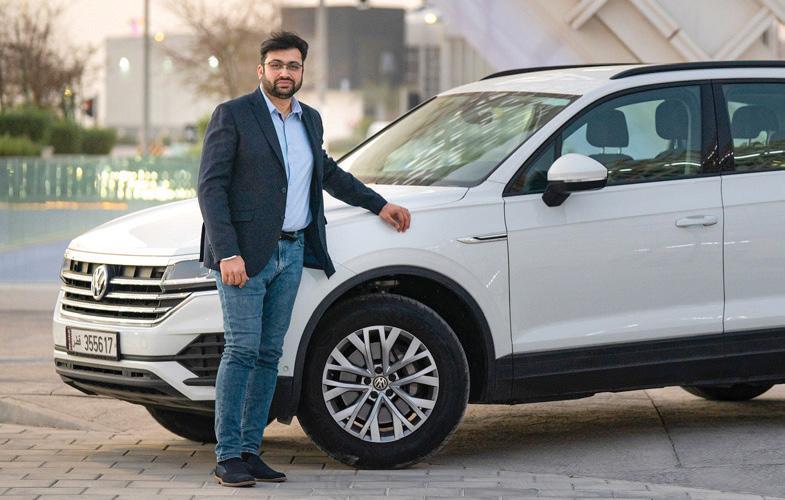
“Gitex is not just a big gathering of people. It’s the super-connector humanising the virtual and digital economies. It serves a profound purpose
accelerating the digital economies of UAE and many of its alliance partners




stakeholders with outstanding minds from the
We feature the latest smartphones from vivo and OPPO, and Bose’s new earbuds

Group
Contributing
Senior
General manager – production S Sunil Kumar



Production manager Binu Purandaran
Production supervisor Venita Pinto
Chief commercial o cer Anthony Milne anthony@motivate.ae
Publisher Manish Chopra manish.chopra@motivate.ae
Digital sales director Gurjeet Kaur Gurjeet.Kaur@motivate.ae
Sales executive Sonam Sharma sonam.sharma@motivate.ae



Group marketing manager Joelle AlBeaino
joelle.albeaino@motivate.ae

New technologies have had a huge impact on the financial services market in recent years. The Middle East is racing ahead with digitalisation of financial services in line with the region’s national goals and is a strategy which lies at the heart of the region’s finance sector. Moreover, the region consists of more youth with almost 60 per cent of its population aged under 25 – a young, digitally-savvy and tech enabled economy geared for modem financial experiences.
A digital-first approach is clearly the way forward and one which empowers banks to become more competitive while providing consumers a pathway to their individual banking experiences, thereby

boosting their services. According to a survey completed by Broadridge, more than 50 per cent of C-suite leaders in firms that have reached a high maturity level in their digital transformation journey, from the pandemic and beyond, have experienced an increase in revenues and profits as a result.
Additionally, more than 60 per cent of surveyed leaders reported that digitalisation has helped them make better decisions and improved planning.
In fact, at Gitex Global too, innovation in customercentricity is one of the key areas of discussions that executives aim to have as businesses prioritise compelling, high-impact digital experiences. The focus on data and analytics to drive optimum experiences in this digital world will be a strategic part of these dialogues.
Here, we take a closer look at why digital finance is the future and how financial institutions can approach modernisation to ensure growth.
The transformation of financial services is more important than ever. Here’s why...
As companies in the financial services market continue to invest in digital transformation, the primary goal for most organisations is to deliver a userfocused customer experience that prioritises customer convenience. The Arab African International Bank for instance recently elevated its customer journey across all major touchpoints to drive user-centric digital banking and for its customers to have access to various financial services.

Moreover, branchless banking, neobanks and challenger banks are also on the rise and gaining strong foothold, all to focus on increased value addition for customers by addressing their needs. Meanwhile, financial institutions are pacing to stay abreast of customer expectations. While customer acquisition is vital, retaining a customer is even more important and one which has been proven to be less expensive. This aspect also makes customer journeys and experiences a key component in digital transformations.
Hence, keeping pace with advanced technologies to meet modern user expectations remains vital. Customers will not take time to move to alternatives if they feel their journey is not satisfactory and others in the sector can better serve their needs.
While focusing on improving customer experience (CX), there are several avenues a financial provider could take.
Some of the areas they should play close attention to include, providing an exceptional first interaction, improving customer communication, and implementing personalisation through the user journey.
Exceptional first impressions to improve retention: First impressions generally can make or break the customer experience quickly and also impact
customer retention. According to Hubspot, 92 per cent of customers would stop purchasing from a company after three or fewer bad experiences. When it comes to banks and financial institutions in particular, new customers are often required to provide a lot of personal information and documentation.
Digitising this first step helps improve CX by saving time and creating seamless processes during the initial onboarding experience.
To enhance the initial customer experience, the industry can digitise – a process for collecting customer data, way the organisation obtains and stores documents and data validation to ensure accurate information and completion of applications
Improved forms of communication with mobile: Digital transformation offers many opportunities for organisations to improve how they engage clients. Tools like online and mobile banking can help reduce delays, minimise missed information and simplify problem solving and this reliance will only continue to increase.
Increased personalisation: Personalisation in CX plays a vital role too. Integrating personalisation into a digital transformation strategy can include both simple or more complex offerings.
Personalisation for better CX includes – crossselling and upselling additional products that are relevant to clients, pricing based on customer behaviour, utilising predictive models for loans and making loan, portfolio or policy recommendations.
The future of customer experiences across financial services is a mix of data, analytics and technology. Customer centricity with personalisation remains top of mind for most financial institutions, just as increasing operational efficiencies do across digital transformation journeys.
As the financial services industry continues to evolve, organisations must focus on meeting today’s customer needs by creating a concise digital transformation strategy, deliver customercentric solutions and differentiate themselves from growing competition.
“TOOLS LIKE ONLINE AND MOBILE BANKING CAN HELP REDUCE DELAYS, MINIMISE MISSED INFORMATION AND SIMPLIFY PROBLEM SOLVING AND THIS RELIANCE WILL ONLY CONTINUE TO INCREASE”Ahmad Saad

Is our propensity for sharing every detail of our lives – and the lives of our kids – putting ourselves, our friends and family, and even our employers and colleagues, at risk?

 Werno Gevers, cybersecurity specialist at Mimecast
Werno Gevers, cybersecurity specialist at Mimecast
including employers. For example, if a parent posts a photo of a child’s birthday outfit outside their school, it reveals information about the child’s age, location, the school they attend and more, which cybercriminals could potentially access and utilise in their attacks.”
The line between personal and the business worlds is also blurring. Posts on business oriented sites like LinkedIn are becoming more “social” and employees and companies are inadvertently leaking sensitive business and personal information.
“That job advert for a firewall engineer with very specific requirements tells a cybercriminal important information about your choice of security vendors and where there are gaps in your cyber skills, information that they can’t easily obtain elsewhere,” explains Gevers.
In Mimecast’s State of Email Security 2022 report, 60 per cent of organisations in Saudi Arabia and 66 per cent of those in UAE were concerned over risks to the business from employees oversharing company information on social media.
experts have warned that cybercriminals could use information on social media to harvest personal information to boost the e cacy of a broad range of cyberattack types.
According to Werno Gevers, cybersecurity expert at Mimecast, any information shared online can be used to develop social engineering and other cyberattacks. “Our love of sharing details of our personal and professional lives online can give cybercriminals useful information about our location, date of birth, occupation, place of work, hobbies and even intimate details about our personal lives. Cybercriminals then use this information to improve their techniques and launch increasingly sophisticated and convincing attacks that can trick even experienced and cyberaware internet users.”
“As much as we love sharing photos of our kids’ birthdays and special moments, it can pose a very real and direct security risk to parents, kids and others in their personal or professional lives,
“As soon as content exists in digital format, it’s out of your control and could potentially fall into the hands of unscrupulous criminals,” says Gevers. “In the case of photos and other information shared to social media, all it takes is for threat actors to develop online personas that can ‘connect’ with your social media profiles and they have direct access to all the personal information you post online. Sharenting poses additional risks, as cybercriminals could use the information you post about your kids to commit identity the t that can put kids at risk for years to come.”
Some studies estimate that by 2030 nearly twothirds of all identity fraud cases a ecting kids will have been a result of sharenting. And since anything posted online lives on indefinitely, kids may have a hard time later in life disassociating themselves from pictures or other information posted online by their parents.


Gevers advises that social media users take extra care before posting anything online. “Never reveal intimate personal details about where you live, where you work, or where your kids go to school. Avoid posting photos from the o ce that can provide insight into your company’s security measures, as threat actors could use this information to circumvent the organisation’s defences. Critically, remember that the internet doesn’t forget: anything you post online is likely to remain there indefinitely, so take care to consider whether that photo or social media post could create risks to you or those in your immediate circle, including your employer.”

The debut of DevSlam, a co-located event at Gitex Global 2022, demonstrates the growing profile of coding as the foundation of the digital world. Organisers describe DevSlam as an opportunity for the global coder community to engage with the UAE’s thriving tech market and learn from top coders, entrepreneurs and business leaders. Similarly, the UAE has pledged to offer Golden Visas to 100,000 qualified and talented coders worldwide. This follows the National Program for Coders, a series of national initiatives to develop talent, expertise and innovation in coding. During the launch, Sheikh Mohammed bin Rashid Al Maktoum, Vice President and Prime Minister of the UAE, and Ruler of Dubai. said, “Nurturing and empowering advanced
skills represents a major pillar of the nation’s strategy for building a thriving digital future driven by advances in science, knowledge, innovation and technology.”
These developments come as demand for software developers soars, doubling in 2021 as the pandemic pushed digitisation into overdrive. Demand for advanced computing skills will continue to soar in the foreseeable future, forecasts show.

Countries that want to remain competitive are preparing for this future by introducing computing skills as early as possible in the education cycle. UAE and Accenture announced a partnership in 2019 to bring coding to schools ahead of Expo 2020. The consulting firm said children can begin to pick up programming concepts before they know how to read and write. “Younger
children are naturally more inclined to be curious. By targetting primary school students, we can nurture and help shape this curiosity while giving them a head start.”
That said, there are questions about whether learning code is essential with increased accessibility of low-code and no-code developer platforms such as Mendix and Quixy. These websites replace technical coding environments with intuitive drag-and-drop interfaces, allowing all development skill levels to create enterprise-level applications. In fact, there are AI platforms that write their own code, short-circuiting the need for developers.
The answer to this question is to think of coding as the raw material for developing, and developers as the architects of our new digital age. Developers aren’t simply coders; they are problem solvers and are more creative than most people realise, and this is why developer talent is in more demand than ever. In fact, low-code and no-code environments add more value to developers by allowing them to focus on the creative process rather than the mechanical parts of writing code. By democratising coding, these platforms also help relieve the labour shortages plaguing the IT sector while accelerating digital transformation. Research and Markets expect the global lowcode development platform market size to reach $35.2bn by 2030, registering a CAGR of 22.9 per cent from 2022 to 2030.
Indeed, coding is valued by employers across the spectrum, technical background or not. This is because coding is essentially all about problem-solving. Writing a programme requires strategic thinking about inputs and outputs, user intent, how to handle errors, etc. This type of calculated thinking helps foster logical reasoning skills applicable to many other aspects.













































Technology is transforming dentistry for the better, and new imaging technology has paved the way


Theultimate goal of any medical profession is to safeguard and improve a patient’s health and well-being. In addition to improving their competencies in research, preventive measures,and treatment techniques, achieving optimal quality care requires practitioners and their patients to establish a positive relationship based on trust and mutual respect.
This is especially true in the field of dentistry. A common fear people have is going to the dentist, and while dentists must uphold the best standard of care for their patients, an element of psychology and human connection comes into play in order to ease the mind and build rapport. This doctor-patient connection is the cherry on top for doctors and patients alike, as it helps to achieve the best results in oral care and ensure the patient will come back to the clinic for continued treatment.
As patient satisfaction and quality care are closely related with the practitioner’s positive attitudes and communicative skills, practitioners need to focus on patients as ‘individuals’ and have ‘real’ communication with them.
Adding to this, it is also important to highlight another element of patient care which is quickly evolving and becoming more mainstream. Digital dentistry has rapidly picked up its pace in the region and has proven to have a positive impact on patient relationships, especially following the pandemic.


The digital transformation of the sector allows us to say goodbye to uncomfortable impressions, and analogue processes that are extremely time-consuming.

WITH THE ITERO ELEMENT 5D PLUS IMAGING SYSTEM, DOCTORS CAN SIMULTANEOUSLY RECORD 3D, INTRAORAL COLOUR AND NEAR INFRARED IMAGING IMAGES WITH ONE FULL ARCH SCAN, IN AS LITTLE AS 60 SECONDS





Technology is transforming dentistry for the better, and new imaging technology has paved the way.
A good example of digital dentistry making the lives of patients are doctors more e cient is the latest scanner, the iTero Element 5D Plus imaging system. With this imaging system, doctors can simultaneously record 3D, intraoral colour and near infrared imaging images with one full arch scan, in as little as 60 seconds as well as aid in the detection of caries above the gingiva – allowing patients to visualise treatment options together that result in informed decisions for optimum oral care.
As a region, Middle Eastern countries have become early adopters of such digital technologies. The public and private sectors have made significant gains in establishing a robust digital infrastructure that supports innovation and opens new economic possibilities. This has also attracted investment from various technology vendors who are working diligently to serve the region.
In recent years, a huge number of dentists –from periodontists and implantologists through to endodontists and prosthodontists have moved to the region, attracted, of course, by the government regulations and low tax rate, but also by the growing size of the industry and the respect that it now commands.























To conclude, practitioners must not lose sight of the psychological aspects of care when engaging with their patients, and technology can play a major part in this. Not only will the advancement of technology in the dental sector increase accessibility to patients, it will also elevate the level of patient care being provided, making it more seamless and more enjoyable for each party.














have a lot of insight to o er if they are granted insights themselves. By understanding key metrics and gaining an overall view of the corporate strategy on AI, sta outside the core project teams could happen upon an idea that might otherwise be missed. Such access requires a robust infrastructure and clear metrics around the accuracy and useability of data.
If everyday AI is to work, then the infrastructure must support the tools and platforms that are being introduced. Infrastructure transformation must be designed in parallel with AI projects but implemented ahead of them. It should support the bandwidth and scaling requirements of everyday AI in terms of both compute and storage capabilities and be implemented in such a way that the organisation avoids technical debt down the road.
The region su ers from skills gaps in technology fields. While a range of government initiatives have been devised to solve this problem, many of these may take several years to bear fruit. In the here and now, enterprises that want to build an everyday AI culture can look to their own talent pool.

Itis true that artificial intelligence (AI) will be the great enabler in the years to come and that regional organisations have come to believe this en masse. But we must ask ourselves how many of these deployments went according to plan. How many of them added value? Here, I share the six main drivers of success in becoming an AI-mature organisation with a culture of everyday AI.
Through implementation of a use-case qualification framework, organisations should appoint people to project roles that can champion change that focuses on value creation. Domain experts should steer projects, as they are the closest to the issues that AI should seek to address. At this stage, KPIs must be agreed. KPIs should,





where possible, be designed to quantify value beyond the use cases themselves, venturing into areas such as reuse and capitalisation across projects.
During every stage of every phase – design, implementation, and the rest – the organisation’s leaders should get together in regular executive workshops for knowledge transfer and ideation. Each use case that is implemented will be done in consultation with the map. Di erent projects will belong in di erent phases according to the organisation-wide capabilities that have been built up to that point.
03. DATA Enterprises should commit to the democratisation of data access. Non-IT employees




















The challenge is in driving the AI programme forward while delivering an employee experience that can attract and retain the right skills to make it happen. One way of doing this is to appoint citizen developers – non-technical sta who build AI solutions using low-code platforms. This gets the AI initiative up and running while creating a rewarding environment for non-IT sta and relieving AI specialists and data scientists of the workload.
Good AI governance ensures that data is useable, accessible and secure. It strikes a balance between auditability and permissions that allows the organisation to scale its use of data. If the progress of AI systems is not monitored, performance can degrade. People must be appointed to ensure responsible AI – to measure the progress of models and ensure their operation is not becoming detrimental to the business and other parties.


Customers must build the right skills to manage the transformation journey and engage with selected partners to advise and execute the journey for them
Q:What are the key digital transformation strategies and success factors for companies deploying digital solutions?
The goal of a digital transformation strategy is to come up with innovative solutions to elevate an enterprise’s operations into the digital age. Some digital transformation strategies include leveraging digital technologies that will make business impact and improving cybersecurity to protect customers’ environments. It also includes acquiring talents to fit skill requirements and using data analytics to improve current digital systems.
What are the barriers that usually block the path to transformation?
The primary reasons for smooth adoption of digital transformation continue to revolve around understanding culture and having a plan to manage this.
Skills come next, and customers need to build the right skills to manage the transformation journey, as well as engage with selected partners to advise and execute the journey for them. Poor quality of internal data can make it di cult to plan the before and a ter stages of digital transformation. It may also interfere with making the right decisions for the business. Another barrier is the disconnect that begins to creep in, between the original strategy, project execution and project milestones. This must be managed by steering committees and hands-on executive engagement.
Although cloud adoption has accelerated, why are some organisations still reluctant to move to cloud?

The main reasons for laggard behaviour around cloud adoption continue to be around concerns of security and data sovereignty. It is also because of lack of awareness of the benefits, lack of suitable skills to manage, and resistance to make changes to systems and processes due to cost and time challenges.
How are you addressing today’s organisation’s diverse technology needs?
Customers are facing multiple challenges as they embark on their digital transformation journeys, which requires them to refresh strategies, processes, modernise applications, adopt new technologies and enhance systems to achieve desired business outcomes. We guide our customers to focus on various use cases and start with those that will have the highest impact for their enterprise. This is done through our consulting services, where we consolidate requirements, create and deliver solutions and ensure success of the project.
We are witnessing the adoption of solutions in the areas of cybersecurity, hyperautomation, application modernisation, data governance, smart infrastructure and managed services. We are aligning our strategy and skills to ensure that we can support our customers to achieve the desired outcomes from these solution sets.
Over the last 12 months, the nature of the CEO’s role has changed significantly at Omnix. It has become more entrepreneurial. I’m currently adopting new approaches and making organisational changes to align with market dynamics. In this role, I’ll continue to focus on transformational activities around organisational structure, polices and processes to drive growth in revenue and profit.







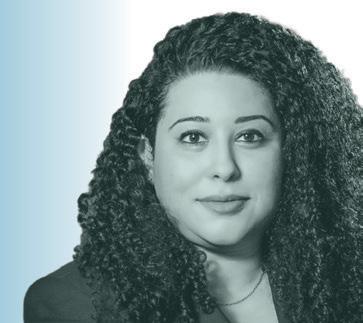






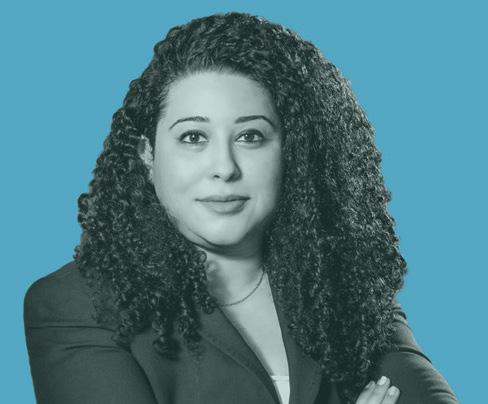


















Innovative digital transformation is one of the key enablers towards a sustainable future


and degradable packaging during its design process. Currently, about 45 per cent of packaging materials used recycled fibres, which are made from recycled wastepaper or plants such as sugar cane and bamboo.
Product durability at OPPO has been enhanced through a self-developed technological innovation - the Battery Health Engine that increases the lifespan of batteries. With this technology, the battery capacity can be maintained at as high as 80 percent a ter up to 1600 charging-discharging cycles. With this path-breaking eco-innovation, OPPO is helping in electronic waste reduction and increasing the lifespan of the smartphone by rendering optimal performance.
Powering breakthroughs OPPO SuperVooc flash charge revolutionised the industry by introducing the first fast charging technology for smartphones, which has improved the charging experience for 220 million users across the world. The technology continues to drive innovation and popularisation of fast charging technology by licensing more than 1,800 patent licenses to third-party manufacturers to implement into their products.

the global technology brand recently unveiled its latest flagship, the OPPO Reno8 Series at The Green Planet, Dubai, a one-of-a-kind indoor rainforest in the Middle East, home to more than 3,000 species of plants, animals and birds.
Adopting eco-innovations and green tech-based optimal solutions have been key drivers of OPPO’s strategic vision towards a sustainable future. Emerging now as a necessity for the preservation of humanity’s future, sustainable development is critical for growth and requires significant long-term commitment. Innovative digital transformation is one of the key enablers towards a sustainable future.
Sustainability has always been intrinsic to our strategic vision, complimented by our priority to innovate and provide the best possible products and services for its users. Tony Chen, founder and chief executive o cer of OPPO explains this succinctly, “In reflection of our brand mission ‘Technology for Mankind, Kindness for the World’, and in staying true to our core value of Benfen, we will continue to invest in our sustainability. In doing so, we also look forward to working with partners across the industry to create a better future for people worldwide.”
In February this year, we unveiled the 2021 OPPO Sustainability Report highlighting the company’s achievements in integrating sustainability and ecofriendly concepts into its entire product lifecycle.
In an active e ort to protect the environment, OPPO has adopted a greener packaging design, and promotes usage of lightweight, reusable, recyclable,

CURRENTLY, ABOUT 45 PER CENT OF PACKAGING MATERIALS USED RECYCLED FIBRES, WHICH ARE MADE FROM RECYCLED WASTE PAPER OR PLANTS SUCH AS SUGAR CANE AND BAMBOO






As a part of its sustainability measures, OPPO has already established a product recycling system, o ering trade-in services in domestic and international markets to promote the recycling and reuse of used mobile phones. In China, more than 1.2 million phones have been recycled through the scheme to date, equating to more than 216 tonnes in electronic waste. In the European Union and other regions, OPPO provides local recycling systems with financial support, participates in the Green Dot recycling program for packaging waste, and works with professional third-party recycling companies.
Aside from our e orts on environment protection, we have has long taken several measures contributing to sustainable development, with a focus on key areas including digital inclusion, health and wellbeing, and youth empowerment. This is exemplifi ed in our development of the colour vision enhancement feature which o ers 766 display profiles, providing personalised solutions for people with colour vision impairment.
This year, we have announced the custom content campaign produced by National Geographic to capture the unique sights and scenery of Iceland in challenging low-light conditions.
As we advance towards a sustainable future, OPPO remains committed to adopting innovative green technology solutions to enhance its products and services. We are determined and excited to carve a unique path and continue to find our Inspiration Ahead, ensuring everything we innovate, build and design provides our customers with the best product experience.




Gitex Global, UAE's annual tech event, has opened the doors to its 42nd edition. Featuring over 4,500 companies and more than 100,000 attendees from 170 countries, the event spans across 26 halls and two million square feet at the Dubai World Trade Centre. The five-day event, taking place from October 10-14, features a global list of companies and startups, showcasing innovative solutions in the metaverse, artificial intelligence, Web3, blockchain, 6G, cloud computing, fintech and big data.
Gitex 3.0 will bring together more than 250 government entities that are leading strategic digital projects and publicprivate partnerships, as well as startups looking for their next big break at North Star Dubai (formerly Gitex Future Stars).
In addition to North Star Dubai, this year's edition includes events such as Ai Everything, Fintech Surge, Future Blockchain Summit and Marketing Mania. The show has also launched two new platforms: Global DevSlam and X-Verse.

As part of Global DevSlam, 10,000 coders and developers from the world's biggest tech companies, including Anaconda, AWS, Google, Instagram, Microso t, Oracle and Red Hat, have come together to advance the digital economy.
Coders (HQ) supports the event, which is inspired by the UAE's mission to build the world's best coder and developer ecosystem, with the country now o ering long-term residency Golden Visas to 100,000 qualified coders.
Global DevSlam also welcomes the worldwide Python community with the launch of Pycon MEA, featuring a line-up of renowned Python masters coming together for the first time in the region. X-Verse, in partnership with Decentraland, curates a unique metaverse journey o ering a first glimpse into the most disruptive industry applications of the metaverse.
Meanwhile, North Star Dubai underlines the vital role startups play in advancing innovation and international business collaboration.
North Star Dubai, with its strategic partner the Dubai Chamber of Digital Economy, has added another hall with 30 per cent extra capacity, bringing together more than 800 exhibitors from 60 countries with over 600 investors.
North Star Dubai has also introduced ‘Africa Fast 100’, connecting investors with Unicorn prospects. Furthermore,

Gitex 3.0 welcomes the biggest names in the global tech world shaping imminent trends, including Microso t, Huawei, IBM, Dell Technologies, Ericsson, Avaya, Hewlett Packard Enterprise, e&, Lenovo and Cisco.
Gitex Global’s vast international footprint is highlighted by new national pavilions from Cyprus, Ethiopia, the European Union, Kuwait, Uganda, and Turkey. The US, France,

Germany, the UK, India, Pakistan, Saudi Arabia, Morocco, Nigeria, and Brazil are among those with increased presence to showcase their national technology prowess and innovations. Visitors can also look forward to a line-up of more than 1,000 government ministers, global technology leaders and experts sharing their perspectives on major trends from AI, cloud computing, crypto, 6G and the metaverse.
More than 30 government and academic entities are participating under the umbrella of the Abu Dhabi Government pavilion at Gitex Global. The Abu Dhabi government is showcasing more than 100 initiatives and digital projects at its pavilion that aim to create a unique experience for visitors by introducing a unified platform that features all government entities. The Abu Dhabi Government participation focuses on five key pillars: Government Services, providing a smooth and seamless experience designed to meet the needs of customers through digital channels; government solutions, promoting cooperation and supporting joint initiatives across various governmental entities and institutions to maximise the value of the initiatives’ outputs; data and artificial intelligence, taking advantage of the safe and e ective sharing of data in order to support the decision-making process and enhance government pro-activeness; cybersecurity, providing cybersecurity and intelligence to protect digital infrastructure, systems and data towards a resilient digital society, and digital enablement, driving
socio-economic growth by accelerating integration with digital systems, applications, stakeholders, customers and business partners.

This is the first time G42 is appearing as an exhibitor at Gitex Global to demonstrate the breadth of its technology ecosystem and address questions about the present and future of technology and its role in societies. At the G42

stand, its operating companies have taken centre stage to o er interactive experiences and presentations from senior leaders to showcase the latest products and solutions across di erent industries, from energy-e cient data centres to AI-powered geospatial intelligence.


Flat6Labs is making its Gitex Global debut, and over the five days of the event, is hosting 24 of its startups in rotation. The company is o ering visitors an opportunity to engage with each startup at one of the stand’s dedicated demo kiosks.
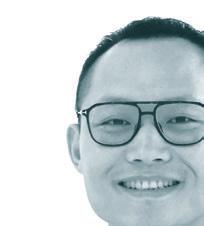
These organisations span multiple sectors including edtech, healthtech, cybersecurity, real estate, construction, sustainability, automotive and sports engagement, with each o ering a product or service designed to disrupt their industry. In addition, it will host its 'Demo Day' on October 12, where startups that are part of cohort 3 of Flat6Labs Ignite will have the opportunity to present and pitch to regional venture capitalists, angel investors, corporates and entrepreneurship ecosystem leaders, with the aim of securing additional investment.
Huawei is presenting its latest end-to-end products, solutions and advanced ICT technologies, focusing on 5.5G, AI, digital power, cybersecurity, cloud and industry applications designed to meet the needs of various industry scenarios and sectors such as government, utilities, oil and gas, transportation and finance. The company is also revealing its solutions and technological updates that can address climate change and drive clean energy development. In cloud, it's showing its everything-as-a-service model that envisions a future where all infrastructure and applications will be cloudbased. At the booth, guests can explore how cloud can be incorporated into industry solutions in government and enterprises. In cybersecurity, Huawei is reiterating the importance of a secure-by-design principle that considers security not as an added-on feature but a fundamental part of the product blueprint.



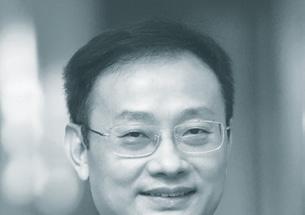




Dahua Technology, the video centric smart IoT solution and service provider is showcasing its full range of security solutions and highlight its latest immersive







LED screen at the event. The company’s LED display solution will be the centrepiece of the booth. Composed of LED screens on three sides and controlled by a special LED control system, the solution allows visitors to have a deeply immersive experience.







Nozomi Networks is demonstrating its new subscription-based Threat Intelligence Feed, which can now be used with third-party cybersecurity platforms. The continuously updated feed provides data on malicious IP addresses or URLs, new indicators of compromise signatures, threat sources, malware hashes, and methods and tactics to gain system access. It serves as a comprehensive security feed for OT and ICS applications, with new use cases and tools to improve defenses against new and emerging threats. Nozomi Networks can be found with partners Oregon Systems and StarLink.

Snowflake is presenting how its data cloud can help organisations unlock and mobilise their data.




Visitors to this year’s show will experience how Snowflake’s platform powers the data cloud which is built entirely in the cloud to address the challenges and opportunities of multiple industries, including healthcare, media, finance, retail, advertising and manufacturing. Snowflake will showcase how companies can build applications directly on top of its platform, monetise their data-intensive applications and deploy them directly in the data cloud. Users can then easily enable discovery and collaboration throughout their business using Snowflake as the basis for application development.



Cloud Box Technologies is emphasising smart digital transformation for both the small and large enterprise and how the company is capable of addressing customers’ individual needs within allocated budgets. The company is also highlighting the specialised capabilities of being a systems integrator that is equipped to tackle on-prem digitisation, a strong NOC as well as how it is being pre-emptive in the managed detection and response service capabilities.

Liferay is displaying its advanced solutions, including its new cloudbased DXP-as-a-service o ering. Liferay’s single platform, delivered in a SaaS based cloud environment, enables tailored digital solutions to help organisations stay seamlessly connected to people and systems. Visitors to Liferay at Gitex Global can witness digitisation of customer journeys across key industry verticals that include government, insurance and banking. Liferay will host its regional partners AppsWave, American Eagle and UAE Digital Lab at its booth.



At Gitex Global, Mandiant is showcasing Mandiant Advantage, its multi-vendor XDR platform that delivers Mandiant’s expertise and frontline intelligence to security teams of all sizes. One of the modules within Mandiant Advantage is attack surface management which allows organisations to see themselves through the eyes of the attacker. This has rapidly become a top priority given the sharp uptick in adoption of cloud, SaaS and mobile across a distributed workforce which leads to an expanding, evolving and changing attack surface subject to an increasing number of sophisticated threats. Organisations can use the insights from attack surface management to continuously discover and monitor their exposures and enable intelligence and red teams to operationalise and inform risk management.
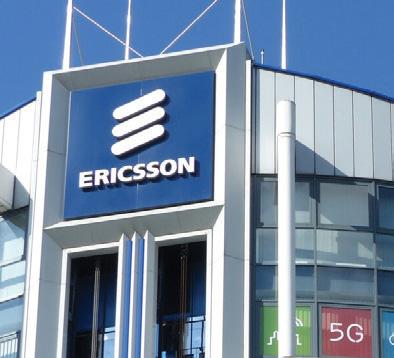
Ericsson is highlighting it latest technologies and 5G use cases at Gitex Global.
Visitors will be able to engage with subject matter experts at the it's stand and discover demos of technolo-

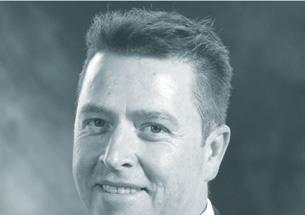

gies that showcase ways in which 5G unlocks the future of communications, gaming, and industries. The company will emphasise on how limitless connectivity will open abundant opportunities for a sustainable future. Through technology, collaboration and fostering fruitful conversations with industry professionals, Ericsson is striving to propel the digital future of the region and inspire the next generations of leaders to join the region’s technological revolution.
SentinelOne, a cybersecurity company, is showcasing its Singularity extended detection and response and Singularity for identity autonomous cybersecurity solutions at Gitex Global. The company is engaging with channel players in key Middle East and Africa markets. The Singularity extended detection and response solution is built to be better, faster and autonomous to cybersecurity when compared to traditional approaches. It is also designed with the security analyst experience in mind and empowers users with richer data, smarter workflows, and powerful tools at every step of the threat lifecycle.








of global energy consumption and 80 per cent of global greenhouse gas emissions. The GCC is one of the most highly urbanised parts of the world, with 85 per cent of the population living in cities today, expected to rise to 90 per cent by 2050.
Data is the linchpin of the digital city. Sensors collect data on infrastructure, processes and operations such as utilities, mobility and infrastructure which can then be exposed to advanced analytics platforms. This data can better manage resources, assets and services and improve operations. Ultimately, the insights a orded by this data help cities realise specific initiatives and improve the lives of their citizens. The McKinsey Global Institute found smart city technology can improve essential quality of life indicators – the cost of living, safety, time, jobs, connectedness, environment, and health – by 10 to 30 per cent.
A vital component of the digital city is the Smart Grid Digital Twin, a simulation of the electricity generation and transmission system. The Smart Grid Digital Twin reflects the entire life cycle process of the smart grid by mapping it in the virtual space. Power grid transmission lines are expanding as populations increase, coupled with frequent natural disasters and equipment deterioration, resulting in increased pressure on power grid line inspections. Current line inspections mainly rely on manual processes that are ine cient and result in inspection blind spots. Digital twin smart grid technology can realise realtime assessment, fault analysis, and report the results, thereby significantly reducing labour costs.
Tra c congestion is almost an inevitable part of urban living. But gigabits of data on travel are generated in cities every day from mobile maps, surveillance camera videos, taxis, buses and subways. Intelligent tra c management based on the digital twin can use this information and historical data to accurately evaluate road congestion levels in real-time, major event security, realtime navigation and congestion event playback. All these functions allow decision makers to relieve and clear tra c congestion using smart technologies. These are just two examples of digital cities’ potential to change how
INDICATORS – THE COST OF LIVING, SAFETY, TIME, JOBS, CONNECTEDNESS, ENVIRONMENT AND HEALTH – BY 10 TO 30 PER CENT
we live, work and play. Increasingly, regional leaders are turning to innovative technologies to future-proof their cities against current and future shocks. Abu Dhabi and Dubai were ranked as the smartest cities in the Middle East and North Africa region in the ‘Smart City Index 2021’. Masdar City in Abu Dhabi represents the first attempt in the Middle East to build a smart, sustainable city.
Masdar City aims to reduce the use of energy, water and generation of waste using a combination of technology, architectural designs and solar power. For example, the use of low-flow showers

and smart water metres ensures the reduction of water wastage. The architecture ensures that streets and houses are cooler than they would be otherwise.
The world will only get more urbanised. Smart cities built on digital twin platforms can help address current challenges, predict future occurrences and proactively resolve them, while creating new socioeconomic models for the benefit of communities and the planet.

The Dubai Digital Authority (Digital Dubai) is a rec ognition of the power of data to improve lives and create economic benefits.
Data is the foundation for the smart city Dubai aspires to be and the emergent digital economy the coun try is fostering. Established by Sheikh Mohammed bin Rashid Al Maktoum, Vice President and Prime Minister of the UAE and Ruler of Dubai, the authority oversees Dubai’s information technology, data, digital transformation and cyber security. The authority is the umbrella body for Dubai Electronic Security Center, Dubai Statistics Center, Dubai Data Establishment and Smart Dubai Government Establishment.
Siloes are the greatest danger to lev eraging data. Data sharing between agencies is, therefore, paramount to the digital economy. Part of Digital Dubai’s remit is to share data seamlessly across different agencies to solve real chal lenges by identifying where this data lives, its quality, and how to link it effec tively to the bigger picture. That’s why Dubai is creating a series of Primary Reg isters for data.
A ‘Primary Registry’ is a single point of truth that consolidates fragmented data from various sources into a single trusted database. This enables stakeholders to access trusted data from a single location to nurture innovation and create new solutions. Ultimately, Dubai Data wants to become a market broker for citywide data by creating a well-regulated market that lets participants securely exchange data with clear business value to derive measurable benefits.
Dubai has also created the DubaiNow app to gather all city services in one place, from paying utility bills, paying for parking, signing tenant contracts, and accessing travel information, among others. The platform offers residents access to more than 120 gov ernment and private sector services from over 30 entities.
The link between sustainability and technology is now well established. In a recent study by Bain & Company and the World Economic Forum, 40 per cent of business leaders said they believe digi tal technologies are already positively impacting their sustainability goals. For
urban centres, sustainability requires measuring water and electricity use first and identifying consumption pat terns so authorities can account for them. Under the Digital Authority, Dubai has created Electricity & Water Con sumption dashboard that visualises how these resources are consumed and lets tenants compare use across buildings or entire communities.
City planners are a primary benefi ciary of data. In such a dynamic city as Dubai, where population movements in and out and between communities are the norm, Dubai is analysing and visu alising residents’ data in a dashboard that shows how Dubai’s population is changing and moving. It also shows how communities are performing and which ones are in demand. Entry and repatriation data show overall market sentiment and help project future pop ulation growth.
These online data registries are the foundation for the Dubai Paperless Strategy, which aims to have the Dubai government completely paper-free by 2021, eliminating more than one billion pieces of paper used for govern ment transactions every year. Having these digital databases also offers the opportunity to expose this data to new emerging technologies. That is why Dubai has been among the pioneers in adopting Fourth Industrial Revolution technologies such as AI and blockchain.
The emirate launched the Dubai Blockchain strategy, which seeks to unlock Dhs5.5bn in savings annually in
document processing while creating an open platform to share the technology with cities across the globe. The Dubai Blockchain strategy is built on three pil lars – government efficiency, industry creation and international leadership. Similarly, in partnership with IBM, the Dubai AI Lab Strategy is establish ing a growing network of partners from across governmental and private sectors to provide the essential tools and go-tomarket support that enables them to implement AI services and applications within their respective fields.
Digital Dubai strategy is a living, dynamic plan. Recently, the authority announced a collaboration with Dubai Police to add a new service to the Vehi cles and Security Services section of the DubaiNow app, allowing users to report minor accidents. The new service seeks to save customers’ time and effort, allowing them to easily report minor traffic accidents through the application instead of waiting for the police to arrive at the scene or go to police stations.
Protecting data is a growing concern for any organisation with any public interface. It is especially critical for organisations to handle sensitive public information. To enhance its cyberse curity capabilities, Dubai Electronic Security Center has announced the launch of the Cyber Node in partnership with Thales Group. Cyber Node seeks to upskill the city’s cyber workforce and protect Dubai’s critical information infrastructure from the ever-changing cyber risks.
The Digital Dubai initiative repre sents a vision to recreate the traditional top-bottom city management model into one that is representative and sus tainable. Ultimately, when businesses, residents and city authorities come together through a shared data plat form, businesses thrive, the population can contribute to the city’s welfare and municipalities can save time and money by eliminating manual processes.















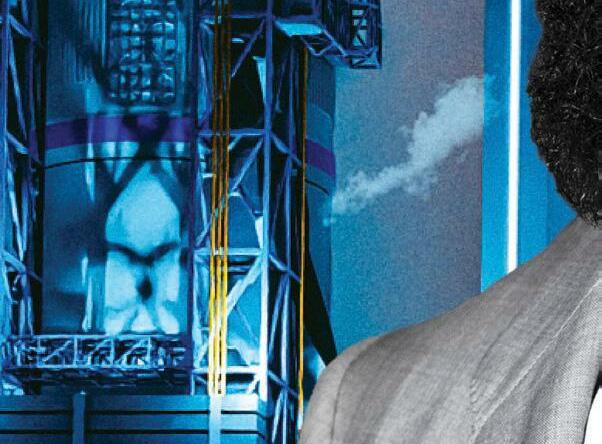

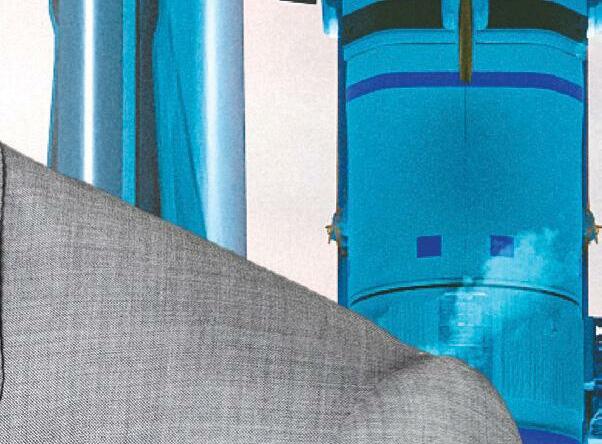

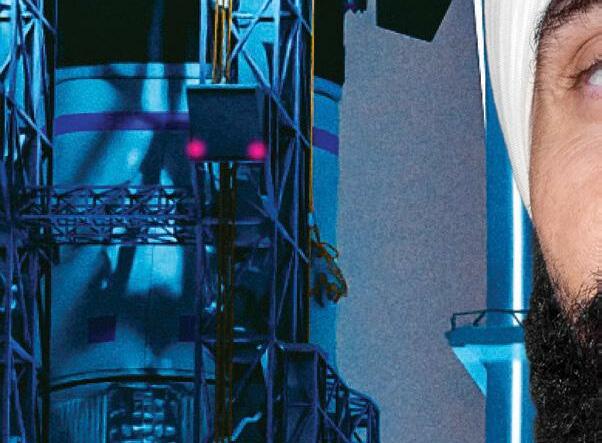
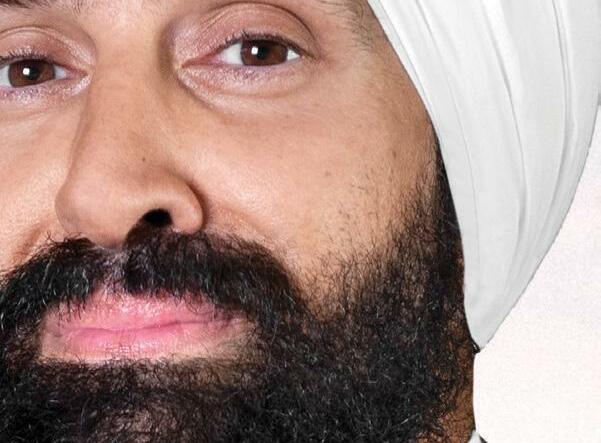














We live in an era where digital is no longer a passing fad; it is a revolution that is set to accelerate and transform the future — of technology, industry, creativity and communication. Across the Middle East, digital advancements are disrupting every aspect of business. Emerging technologies are promising quantum leaps in our interactions with the digital world. One such technology is the “metaverse.”
To comprehend how the metaverse could impact business, it is vital to recall how the Internet has radically transformed our lives. It has had a profound impact on all facets of our lives, including the way we interact, communicate or even shop. This has been possible since the very first Internet versions, through Web2 to the point where we are now at the beginning of Web3 – the third stage of internet development where individuals will have more jurisdiction of the web.
Visualise a digitally enabled world transcending real-world limitations, without natural laws such as gravity, geographical borders, and no limits to what people can create, build, achieve and become. Imagine school children visiting a historical site in a hyper-realistic version of Rome as part of their studies. Consider surgeons being able to practise their skills in a hyperrealistic setting or people travelling to Mars without leaving their apartment. These are just examples of the transformative power of the metaverse – a world really where the only border is our imagination.
So how can the metaverse transform the business landscape, both in the Middle East and beyond?

“While the metaverse can be accurately described as an entirely new platform for businesses to interact with their public, it is more than that,” emphasises Bally Singh, chief marketing o cer at Everdome, a company that is creating a hyper-realistic metaverse.

“The metaverse o ers the potential to build products and services, as, or around a hyper-real experience. In doing so,
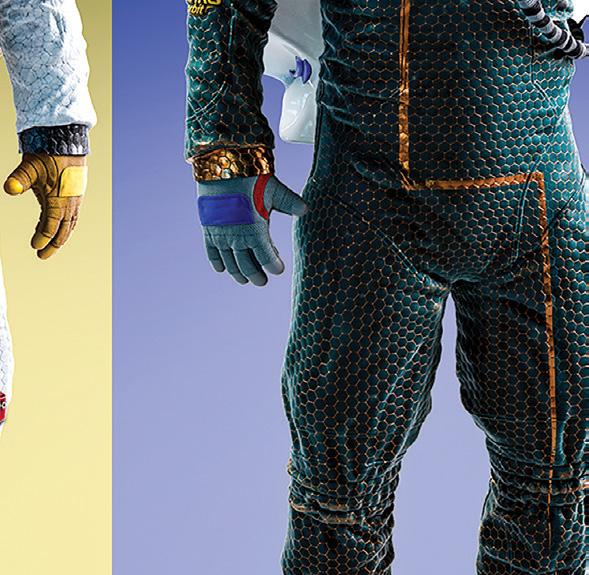
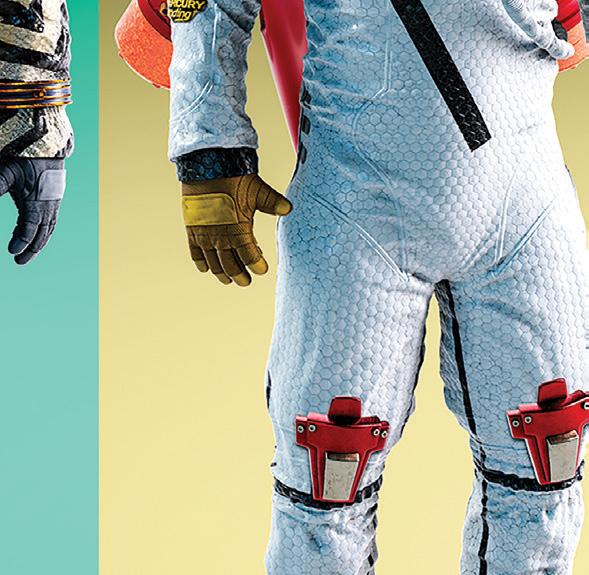


the metaverse will provide an unprecedented opportunity to connect with customers and users in immersive detail on levels not before encountered.
“It provides unlimited scope for anyonecorporates, small businesses, governments, schools, existing industries, and new ones that will emerge specifically in reaction to the metaverse environment - to go beyond what’s currently possible.”
In support of his statements, he provides examples such as how an interior design company can set up shop in the metaverse, creating photo-realistic decor schemes that customers can experience in a hyper-real setting before they make a purchase. Or a medical college that can run simulations, allowing professionals to learn essential life-saving skills without risk to patients. Additionally, governments can expand into digital tourism, recreating popular or historic destinations for people to explore and visit from anywhere in the world. Furthermore, students will be able to relive the age of dinosaurs, explore outer space or climb through the pyramids of Egypt without having to leave their classrooms.
“These are just a handful of possibilities - the truth of the metaverse is that it is practically



limitless in what can be achieved. All it takes is a little imagination, and a partner who can turn ideas into reality,” he says.
Everdome is a great example of this. The company has created a hyper-realistic metaverses where its early users will start their journey in Hatta, in the UAE – a real location, with photo realistic detail. Following this, they will embark on a journey into the unknown to establish a colony on Mars.
Everdome has sold plots of land on its metaverse version of Mars that can be developed as people would do with land here on Earth. People and businesses will be able to come together to create a community in the same way they would do in the real world if they were there.

Business opportunities abound within Everdome. They may include developing entire immersive experiences, acquiring physical metaverse space, or building exciting installations. The company is opening up a new world for businesses to explore exciting, unique ways in which to thrive.
So, why was Everdome created? Founded to fill a burgeoning need in the metaverse space, the company was formed in 2021. At the time Everdome’s team was putting together their first project, Metahero, which is a gateway to the metaverse or a bridge between physical and digital space. They quickly noticed that many brands were looking for a metaverse that could provide the level of detail and quality they were seeking.
Everdome is more than just the spark that inspired the idea.
Consumers and brands have already seen what current metaverses have to o er, but have those metaverses done enough
to attract as many people as they should have? Do these metaverses meet the expectations of users?
In light of these questions, the company set out to create a new metaverse ecosystem that would set new standards of not only what is possible, but also what people can expect at every point of interaction. “We understand that people seek experiences such as they’ve seen in movies, like Ready Player One for example, where stunning graphics combined with hassle-free accessibility come as standard, and where you have the opportunity to build your own developments or applications within the metaverse ecosystem,” comments Singh.
“We have the advanced technology needed to make that happen, to create hyper-realistic experiences that will elevate our connected lives forever. That’s exactly what we’re aiming for with Everdome – an experience that blurs the lines between reality and metaverse existence.”
Meanwhile, land in Everdome is similar to land in the real world. This land is sold in plots, and it can be purchased by anyone who is interested. There is a wide range of choices available for owners of land within the Everdome metaverse, so they can choose where they want to purchase it from. The owner can then decide what he or she will do with it - whether they are going to develop it, hold onto it, or even rent or sell it on to someone else.
Earlier this year, the company launched a series of land auctions, selling 7,238 hexagonal plots of land over eight weeks. “To date we have sold 97 per cent of the currently available plots of land throughout Everdome. Everdome’s eight auction rounds saw 11,700 plots purchased for upwards of $18.6m which is equivalent to 1,531,000,000 $DOME. The average price of a plot of land in Everdome was around 130,000 $DOME.”
So, does this mean the metaverse is ready for mass adoption in the region? Singh explains how the vast array of
EARLIER THIS YEAR, THE COMPANY LAUNCHED A SERIES OF LAND AUCTIONS, SELLING 7,238 HEXAGONAL PLOTS OF LAND OVER EIGHT WEEKS
TO DATE, EVERDOME SOLD 97 PER CENT OF THE CURRENTLY AVAILABLE PLOTS OF LAND THROUGHOUT ITS ECOSYSTEM
people in the Middle East are young, tech-savvy, and eager to embrace innovations that can enhance their lives. “The metaverse is no exception to this. There has already been a strong uptake for existing metaverse games across the region, demonstrating the appetite out there.”
He adds: “There will of course be challenges in broader metaverse adoption. 5G for example isn’t as widely accessible across the GCC, as it is in other regions. Until recently there has been a preference for physical payments rather than digital ones, so the adoption of digital wallets and crypto has been slower than elsewhere in the world. But things are definitely changing. They’re moving in the right direction, spurred on by forward-thinking leaders and governments who are embracing digitalisation as a means for economic and societal empowerment as well as transformation.”
In the Middle East, there is an increasing interest among governments in exploring the possibilities of metaverse. Sheikh Hamdan bin Mohammed bin Rashid Al Maktoum, Crown Prince of Dubai
and Chairman of Dubai Executive Council has launched the Dubai Metaverse Strategy in the UAE. The project aims to generate Dhs4bn for the national economy over five years, along with 40,000 virtual jobs.

Meanwhile, Saudi Arabia has announced that it will invest billions of dollars in advanced technologies over the next few years. Among these investments are $1bn that will go into Tonomous (previously known as Neom tech & Digital Company) – a futuristic city that plans to launch a metaverse.





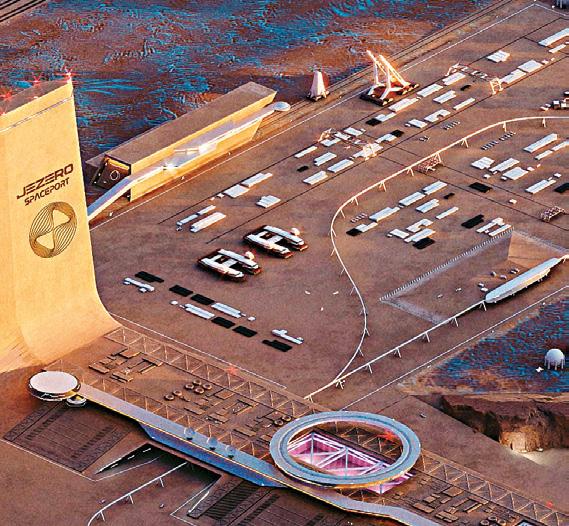
The metaverse can benefit every industry and sectors such as retail, education, healthcare and hospitality are embracing it to enhance digital environment for their customers. Singh describes that in the metaverse, all it takes is a little imagination. “Whatever you can do in the real world you can do in the metaverse... but if you take away the restrictions of the real world you can really open up an entire new universe of possibilities.”
He cites the retail industry as an example, saying we drive to the mall, enter our favourite store, browse the aisles, and select our clothing.
“You take them to the cubicle, try them, find out some don’t fit, and have to search for di erent sizes. It’s not always the most convenient process. And, of course, as a store owner you have to keep plenty of stock on display, including a range of sizes and variants, all of which take up precious space.
“Now, imagine the experience in the metaverse. A virtual assistant greets you. You


OF
AND YOU CAN SWITCH
ONE TO THE NEXT WITH A SIMPLE SWIPE. BUT YOU’RE NOT JUST
OF A T-SHIRT IN FRONT OF YOU
YOU’RE
IT
A TRUE
OF
EVERY
tell them what you’re looking for - let’s say a blue t-shirt. All of the store’s blue t-shirts are instantly available for you to browse through, and you can switch from one to the next with a simple swipe. But you’re not just looking at pictures of a t-shirt in front of you – you’re viewing it on your real-to-life avatar, a true likeness of your physical body in every way.”
He adds: “You can see exactly what each blue t-shirt will look like, whether it’s flattering or not, if the buttons are where you want them to be, if the cut is right and so on. You can try on every item in the store in the same way, and when you’ve chosen what you want to purchase it’ll be delivered right to your doorstep. It’s not just convenient, it’s literally game-changing for consumers, businesses, and even for the environment - just think of how carbon emissions can be cut down by reducing the need to travel.”
Singh has just outlined a basic example of what can be done. In the metaverse, business realities will be entirely di erent for every brand, as it allows them to create something unique that reflects their own values.
Everdome’s metaverse has been meticulously cra ted to ensure that no detail is overlooked. From the aesthetics of the surroundings to the robust security measures, the company has created a safe and secure environment.
“Our use of advanced technology across all aspects of the metaverse has created an impressive space empowering users to unlock practically limitless possibilities, with maximum accessibility and the opportunity to develop a more personalised, custom experience within our metaverse,” states Singh.
“We’ve focused heavily on interoperability to open up access to as many users and systems as possible. On top of this, we have introduced user-friendly layers that allow everyone to enjoy everything the metaverse has to o er, without needing to understand the tech behind it,” he adds.
The company also plans to roll out the ‘Everdome Economy’ in 2023, which will include marketplaces, workforce development, land speculation, open boundaries for peer-to-peer transactions and much more. To further drive the metaverse forward, Everdome carefully curates partnerships in the fields of technology, finance and marketing. In its quest to become the world’s leading metaverse, it is setting examples for what can be done to take the experience above and beyond expectations.
Everdome is building the foundations for a community and giving its inhabitants everything they need to experience a seamless existence within the metaverse. Its plans revolve around creating new and exciting ways to further enhance its metaverse.
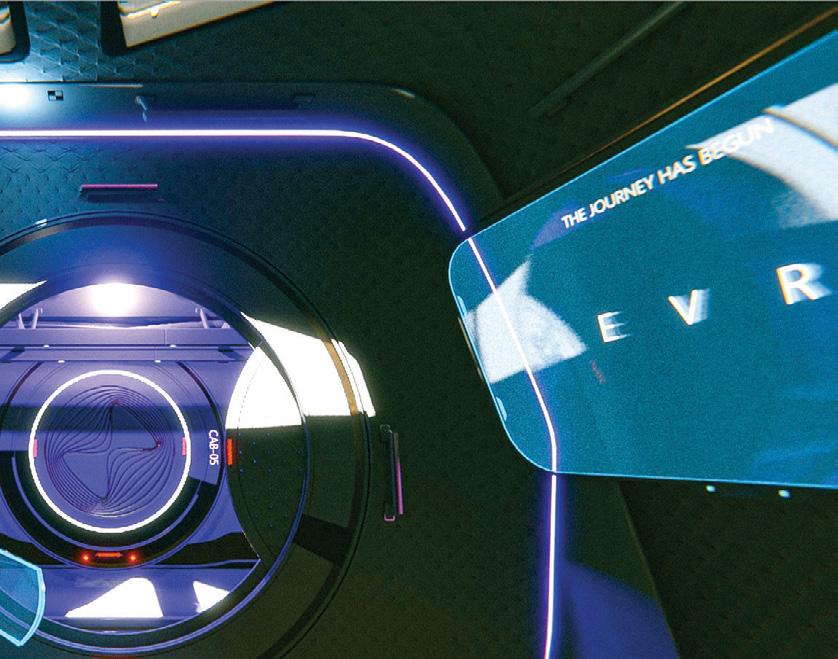

Moving forward, in about five years, the metaverse is likely to become much more familiar to many people, Singh predicts. “One of our greatest tasks at the moment is education and awareness. Once there is a better understanding of what the metaverse is and its potential, it will grow immensely. We’ll see a lot more applications developed specifically for industries who will use the metaverse to augment and even replace some real-world functions.
“Metaverse-specific businesses, even industries will begin to emerge. Naturally there will be developers, coders, creatives – all of whom will contribute towards the ‘physical’ aspects of the metaverse. But there will also be metaversespecific marketeers and advertising experts, realtors selling metaverse plots as well as showing metaverse versions of real-world properties, metaverse tour guides, hosts and hostesses, store assistants, personal assistants among others. Any job in the real world can have a metaverse equivalent.”
The metaverse is, essentially, a reflection of the real world - but powered by imagination. Everdome has created a fully immersive and interactive environment that allows users to engage with brands on a whole new level. Singh says: “We can make anything happen in our metaverse, which can lead us to many incredible, exciting discoveries, realisations, and even unexpected evolutions.
“We’ve created something that is practically limitless, and we can’t wait to see where it may take us.”

AMONG THESE INVESTMENTS ARE $1BN THAT WILL GO INTO TONOMOUS (PREVIOUSLY KNOWN AS NEOM TECH & DIGITAL COMPANY) – A FUTURISTIC CITY THAT PLANS TO LAUNCH A METAVERSE
We have a vague understanding of what defines metaverse. Does it encompass virtual reality, cyberspace, augmented reality, Web3, digital avatars, non-fungible tokens and blockchain? Optimistically, it is a new way of interacting with futuristic technology. Tech giants across the world like Microso t, Google, Apple, Snap, Meta, as well as startups and SMEs have embraced metaverse as the future of the internet. As a metaverse hub, Dubai has not bucked the trend. The city’s technological prowess, vibrant innovation, research and development ecosystem and advanced digital infrastructure, provides a foundation upon which metaverses can be built. The combination of a flexible, robust regulatory framework and supportive governmentled e orts are helping cultivate a culture of innovation and a smooth transition to a digital economy in emirate.
According to economic analysts at the Analysis Group, adoption of the metaverse over the next 10 years could lead to a $3tn contribution to the global

GDP in 2031. With an aim to place Dubai among the top 10 metaverse economies globally, Sheikh Hamdan bin Mohammed bin Rashid Al Maktoum, Crown Prince of Dubai, Chairman of the Dubai Executive Council and Chairman of the Board of Trustees of the Dubai Future Foundation (DFF) launched the Dubai Metaverse Strategy.
The strategy seeks to support as many as 40,000 additional virtual jobs and generate up to $4bn for the city’s GDP by 2030. These jobs will mostly be in fields such as augmented and virtual reality. Providing a roadmap for the future, the strategy is in line with the recently concluded ‘Dubai Metaverse Assembly’. Organised by DFF, the event was held at the Museum of the Future and AREA 2071 in Emirates Towers, Dubai from September 28 to 29. Hosting more than 500 global experts, policymakers, thought leaders and decision-makers from over 40 organisations, the event explored how revolutionary technology can be deployed across vital sectors to create a better future. Many
international organisations and companies participated in the assembly, including the World Economic Forum, Meta, Binance, MasterCard, The Sandbox, Bedu, PwC, Accenture, BCG Digital Ventures, Dubai Blockchain Center and DeCentraland.
The assembly also witnessed participation from government entities and local organisations, such as the Dubai International Financial Centre, VARA, Majid Al Futtaim, DAMAC and Dubai Digital, among others, with the aim of evaluating national projects and exchanging experiences on the metaverse.
Over two days, the Dubai Metaverse Assembly brought together experts to engage in over 25 sessions, activations, workshops and side-sessions. Discussions covered the latest developments in metaverse technologies and explored partnerships to develop digital infrastructure to create future applications for government services, finance, communications and other industries.
Omar Sultan Al Olama, Minister of State for Artificial Intelligence, revealed the five pillars that will reinforce the new Dubai Metaverse Strategy: tourism, real estate, education, retail and government services. He stated how Dubai is serious about sowing the seeds and discovering the potential of the metaverse. “Our population in the metaverse is already the same size as those in India and China, despite our smaller geographic size. This shows that we continue to punch above our weight as a nation. And as we aim to become a top ten ‘metaverse’ economy, we will create a digital twin of Dubai to simulate our plans for tourism, real estate, education, retail and government services in the virtual world.”
Attendees got to witness a glimpse of the future, such as the Ministry of Economy’s metaverse headquarters where meetings can be held. Abdulla bin Touq Al Marri, UAE Minister of Economy stated, “We are setting up a third o ce, this time in the metaverse, to complement our physical locations in Abu Dhabi and Dubai. The




metaverse is a new economic equaliser and under the vision of our leaders, we will continue to pave the way for a new era of opportunities that accelerate our knowledge-driven economy.”
Sultan bin Sulayem, group chairman and CEO, DP World reiterated how the metaverse presents a huge opportunity to solve real-world supply chain bottleneck. He explained that especially in the last two years, “global supply chains have undergone turbulent moments because of the pandemic and geopolitical tension. Now more than ever, businesses and governments are ready to embrace technologies that will boost the resiliency and sustainability of our supply chains”.
Meanwhile, Khalfan Belhoul, CEO of DFF emphasised how the metaverse will likely infiltrate every sector in some way in the coming years, with the market opportunity estimated at over $1tn in annual revenues. He said, “Under the UAE’s leadership, Dubai can become as a testbed to build a network of technology leaders and create collaborations to build a metaverse ecosystem that will allow us to seamlessly connect between real and virtual worlds.” Some panels emphasised blurred lines between the physical and digital world and the role of augmented reality in developing vital sectors and successfully applying new and innovative practices to advance healthcare, manufacturing and automotive. A discussion on real estate in the virtual world explored the opportunities to engage customers in virtual activities. Another panel on how to maximise the metaverse’s potential examined its various building blocks, including decentralised technologies, platforms and applications.
The assembly also witnessed seven side-sessions. It included a group meeting by World Economic Forum on value creation in the metaverse, which outlined the parameters of an economically viable, inclusive and safe metaverse, focusing on two core areas: governance, and economic and social value creation.
Adel Al Redha, COO at Emirates Airline, delivered a keynote as part of the ‘Aviation in the Metaverse’ side session held by the airline. His speech was followed by panel discussions on interoperability and reality gradient. Themes included realism of avatars, AR and VR, regulation and the role of standards.
Big technology companies o ered public immersive metaverse activations and experiences, showcasing their innovative projects and state-of-the-art technological solutions at the event. Microso t, Binance, Bedu, Meta, Accenture, Mastercard and Meta held side-sessions and activations for delegates and revealed
skilled workforce. UAE’s Bedu allowed visitors and delegates to experience life on Mars, inspired by the Emirates’ mission to the Red Planet. Users had the chance to discover what life on Mars would be like in the year 2117, when the Emirates’ aims to build a human settlement on Mars.
Metamall o ered retail and real estate through a virtual lens through a variety of solutions including test tokens and customised avatars. Another sidesession titled ‘Road to the Metaverse: Innovating Governance’ was held by Meta to explore the impact of the metaverse on governments and public service delivery. In addition, Everdome presented a workshop on ‘Creating Worlds and Experiences for a Hyper-Realistic Metaverse’, which included an interplanetary journey to Mars. MasterCard meanwhile hosted a workshop on ‘How Shopping, Banking, and Gaming are Spearheading the Metaverse’, while another workshop by Verse Estate ‘The Metaverse: Not Just a Game but a Game Changer,’ examined how the metaverse is increasingly impacting sectors outside of gaming. Another session ‘Venture Capital for the Metaverse’, led by the Crypto Oasis explored investment opportunities in virtual worlds.
how digital worlds have the power to shape existing and emerging industries, such as art, healthcare, education, gaming, space tourism and more. Showcasing immersive mixed reality training with the HoloLens, Microso t highlighted how immersive technology can close the skill gap, catalyse the Fourth Industrial Revolution, drive augmented reality-enabled workplaces and improve worker safety. Binance plugged users into the evolution of gaming and metaverse finance with its Ultiverse and Orbofi virtual environments.
Furthermore, Accenture forayed into immersive learning with a virtual booth designed to address the future of work and contribute towards building Dubai’s
A ter an outstanding success in its debut year, the Dubai Metaverse Assembly is all set to return again on October 11-12, 2023. Slated to be a bigger and more immersive experience, the city’s decision to launch an assembly based on harnessing the metaverse reflects its confidence in the future of emerging virtual worlds that will shape how humans live, work and interact. The concept of the metaverse has served as a powerful vehicle to reinvent old tech, understand new technology’s benefits and capture people’s imagination. Are we on the verge of a massive paradigm shi t? We will have to wait and see.






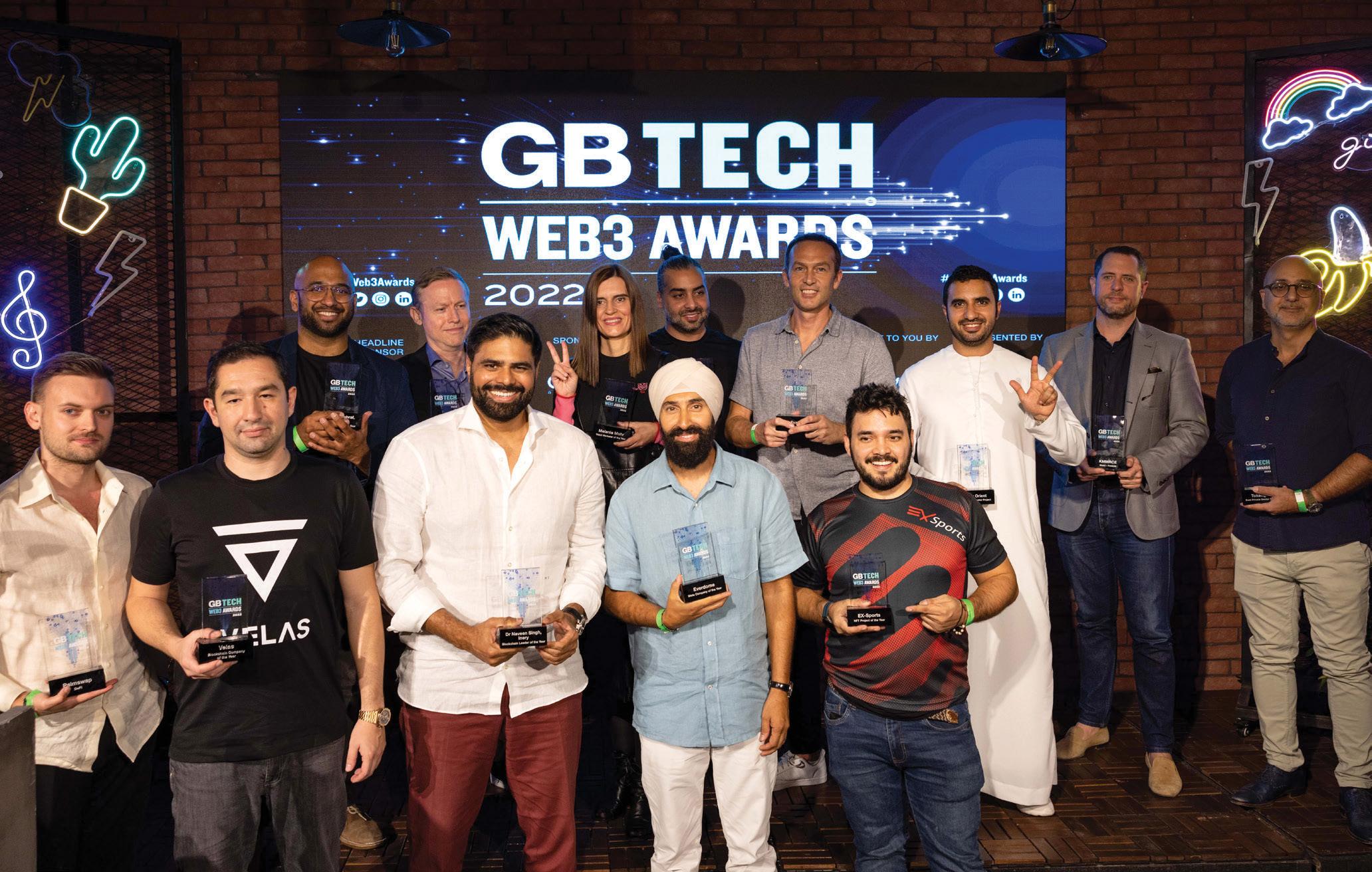

The term “Web3”, which describes the idea of a new version of the web made up of blockchainbased platforms and services fuelled by cryptocurrency, is being touted as the future of the Internet.
The Middle East has witnessed tremendous growth in the adoption of Web3 technologies, with UAE recently launching the Dubai Metaverse Strategy. The move consolidates Dubai’s status as a global capital of advanced technologies such as Web3. The city is already home to over 1,000 companies in the metaverse and the blockchain sectors. As the city attracts new players, the metaverse’ current contribution of $500m to the UAE’s economy is estimated to increase significantly.
In line with the country’s growth and vision, the region’s leading media house, Motivate Media Group and GB Tech Talk (a Gulf Business brand), in collaboration with Arte by Crypto Oasis, launched the GB Tech Web3 Awards 2022.

The ceremony was held on Friday, September 23, at Social Distrikt, The Pointe at The Palm Jumeirah in Dubai to celebrate the influential and trailblazing leaders, companies and startups of the region’s Web3
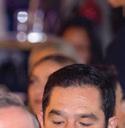







ecosystem. The event attracted over 100 key decision makers and organisations within the Web3 and blockchain space.


Ian Fairservice, managing partner and group editor-in-chief of Motivate Media Group, said: “The future of technology is Web3, and we are privileged to host the first edition of the GB Tech Web3 Awards that aim to celebrate the success and achievements of the leaders across the Web3 landscape.”




At the awards, an engaging panel discussion on how to succeed in Web3 was held. The debate featured Amrita Sethi, a UAE-based NFT artist, Saqr Ereiqat, co-founder and CCO at Crypto Oasis, Mehdi Cherif, co-founder and CEO at Pulse Music, and Gaurav Dubey, CEO at TDefi.
Saed Ereiqat, ecosystem manager at Crypto Oasis, moderated the discussion. The experts spoke about how organisations and startups are on the cusp of transformation, as the world continues to adopt Web3.
Dubey shed light on how they are incubating Web3 startups. “We are precisely looking at the ground level value. In the crypto communities, most of





them are solving problems created by crypto. It goes well with six months, a one-year curve and all that is great. People make money and lose money. I’ve been there for both equities and inventory since 2015. As Peter Schi says, ‘you are wrong the moment you think it’s di erent this time.’ The markets and patterns are always the same. The philosophies will always be the same. And the core philosophy is value. So, to sum it up, we look for the value they’re creating in the long term at a ground level.”
Ereiqat explained what has driven the UAE to be at the forefront of the revolution of Web3 today. “It breaks down to three elements, plus an X Factor. The elements are capital, talent and infrastructure – the base of any ecosystem. The X Factor is what gave us the extra edge.”
Meanwhile, Sethi shed light on the measures of success for an artist to be able to enter the Web3 space and be successful. “I think it’s three things –innovation, authenticity and bravery.” Explaining innovation, she said, “One of the most amazing things about what the Web3, metaverse and NFTs has done is it’s unlocked, like an unlimited amount of possibilities. The only thing that stops you in the metaverse and in
Panellists receive a token of appreciation Saqr Ereiqat A full house at the eventthis Web3 space is your imagination. So we can use technology now as a tool, not just from an artistic perspective but in all businesses, to unlock potential that we could never do before. The second thing is be authentic to yourself. Because one thing we’ve learned, especially in the NFT space with art, is that fads come and go. And then the final thing is being brave and bold, but also making sure that you don’t remain stubborn and are able to be flexible, lead the space and change the space simultaneously.”
Furthermore, Cherif highlighted how music is one of the only mediums that can be incorporated into our everyday activities. However, he
stressed on the problem that the industry has seen for the last ten years. “One of them is the complexity of intellectual property (IP). It’s tough dealing with music IP. The second is there are just too many people standing in the middle. Third is the business model. So artists in the industry make an average high of 12 per cent. And then we also see that we have problems with payments and lack transparency. So, being in the industry for the last ten years, we’ve gathered all our experience and basically tried to create an ecosystem that can bring value to all the di erent actors such as content creators and copyright owners.
“We look at blockchain as a very innovative technology implementing smart contract self-sovereign identity micropayments. But this is not enough. The innovation has to come from the business model itself, and that’s what we stand for. So we want to bring good value to the entire ecosystem.”






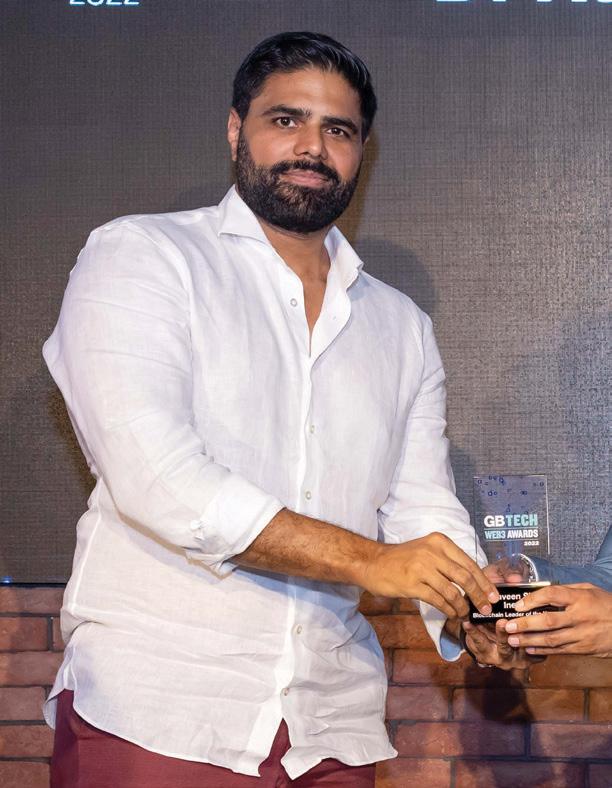
At the GB Tech Web3 Awards, 15 winners were recognised. The panel of judges for the awards included industry experts – Saqr Ereiqat, co-founder and CCO, Crypto Oasis; Andrew Wingrove, group director – Motivate Media Group; and Divsha Bhat, technology editor –Gulf Business and GB Tech Talk
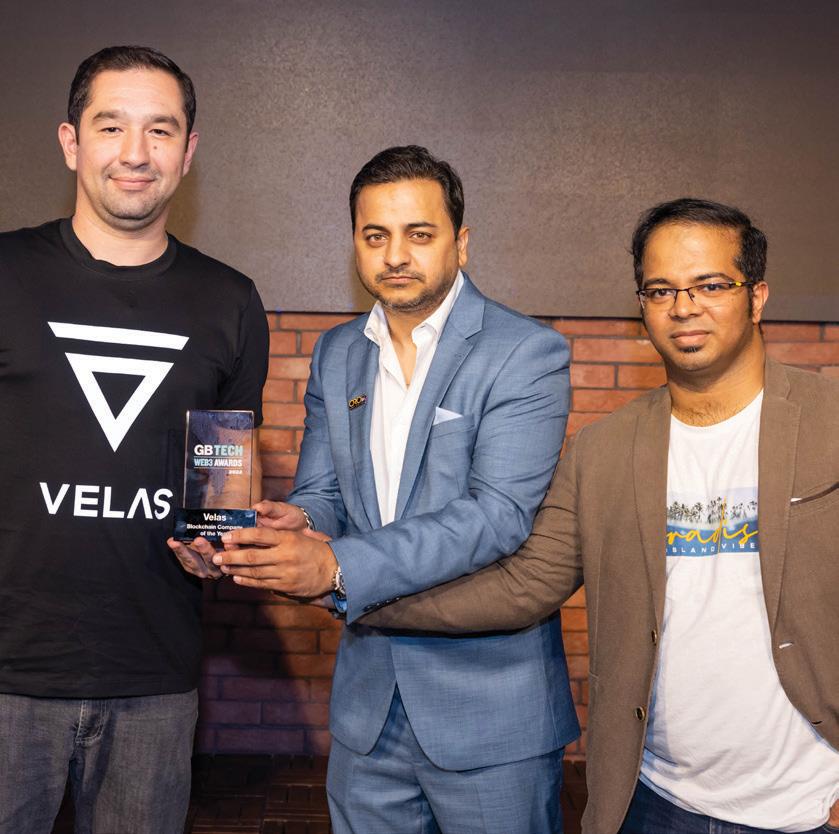
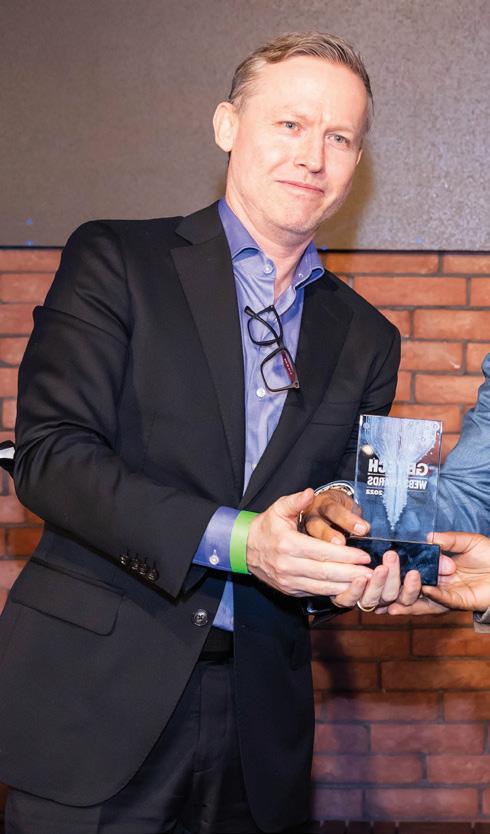
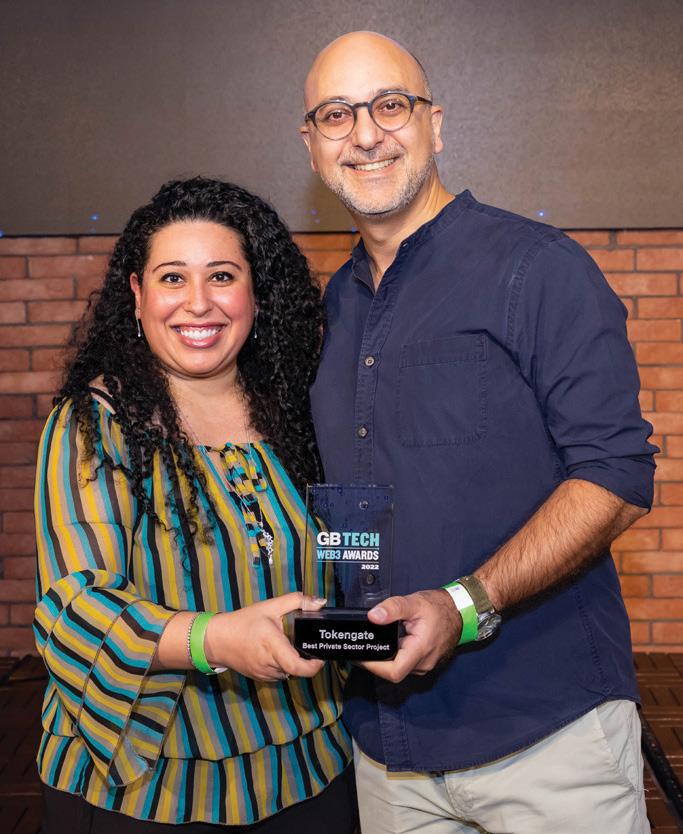

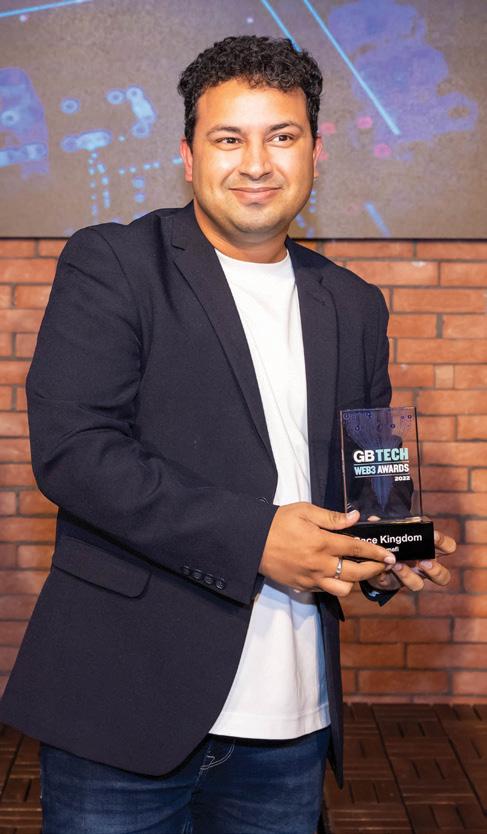






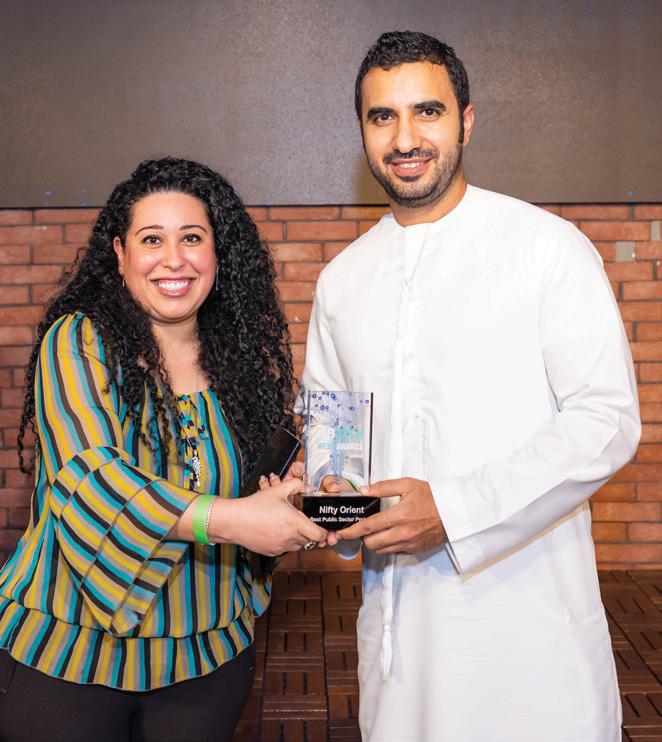



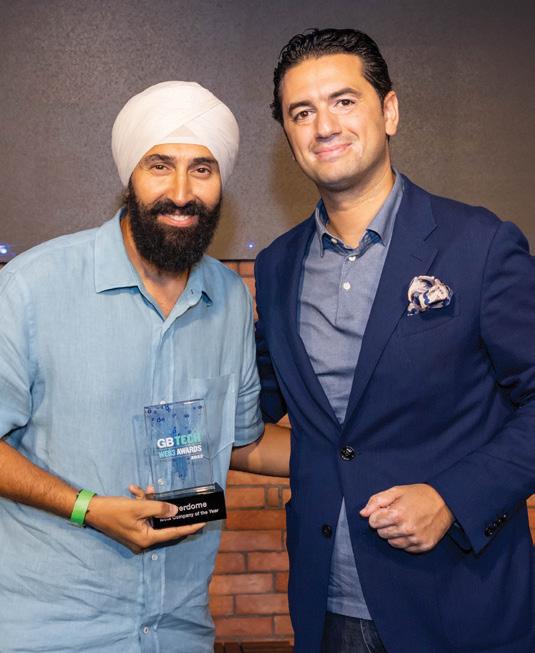







back to assess this ‘parked’ data only works if there’s a material change to circumstances. Either the company needs to stem the incoming flow of data, or it needs more resources to deal with it.
So, what of this dark data piling up so fast that you’d have to be superhuman to ever get through it? Well, the answer is, perhaps, less about one person with superpowers and more about a team with augmented skills. Where people are great at creativity and decision making, technology is great at processing a lot of information at speed. Harnessing artificial intelligence (AI) and machine learning, and using them to augment the skills of the existing IT team, is the route not just to retaining good data-driven decision making, but also reducing the environmental impact of data storage.
This is called autonomous data management (ADM) and it relies on technology


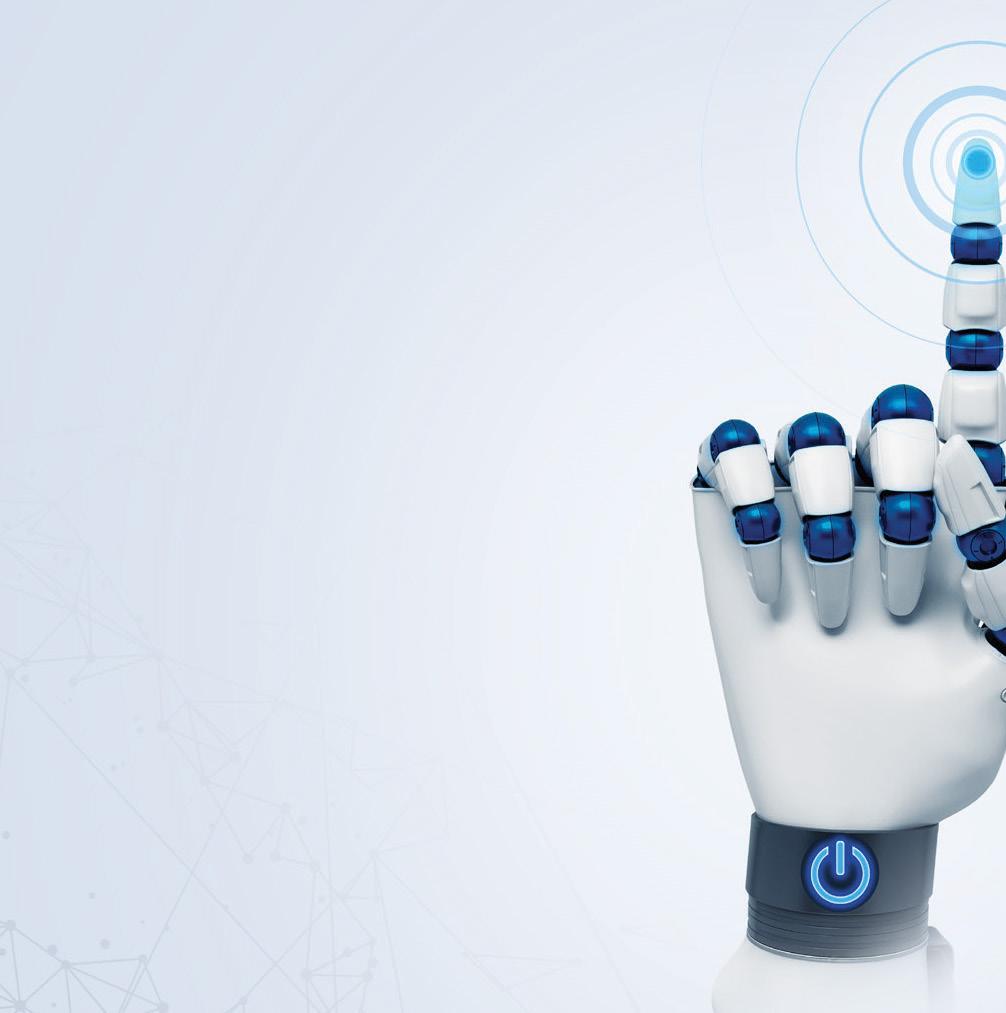

platforms learning data-management practices and independently applying them to new data sets. Applying these policies is historically a manual task. Doing this on a micro basis, item by item, is time consuming so, o ten, organisations take a more blanket approach to data management, implementing a policy that labels medium to large pools of data. This is how you get a build-up of unused – and probably unusable – data that sits forever on unaccessed servers. But, when autonomous data management takes over, AI can enable proactive decision making and policy application at a much more granular level.
From a sustainability perspective, this can help to radically reduce the volume of data stored and the pollution associated with it. Not only can businesses

delete the data that they know for sure is not needed, they’re also able to reduce the storage space that they need by optimising the way that data is held.
In a dark data environment, each of those files need to be kept separately because no one knows that they’re the same document. With ADM, technology is used to monitor files across the whole enterprise, indexing which data is the same, storing only unique data, and replacing duplicates with links to the original versions.
This “deduplication” is especially useful in backup data, where ADMdriven solutions are sometimes able to reduce the amount of power required to store this data. From a business perspective, it means that data risks can be minimised – or eliminated – from networks. This deluge of data that businesses have not been able to address is vulnerable.

Neos, is a “drive a new car every year” programme that will o er UAE customers the much-needed flexibility and the option to drive a new car every year. It is an alternative to car ownership and a hassle-free experience as all the services are built in one single monthly fee without having to worry about down payments. We have partnered with automobile manufacturers and car
dealerships across the country to o er this programme. We have over 50 different car models from Chevrolet, Volkswagen, Cadillac, BMW, GMC and Audi. Moreover, additional brands will soon be joining us on the platform.
Until today only multinational corporations and enterprise clients were entitled
and were served under the car lease programme. This is the first time our programme will allow its customers to not just lease a brand-new car for 12 months but also exchange those cars every year with another new car.
As a market leader in the vehicle subscription and digital leasing, we have always been a forerunner in identifying the customer needs and in introducing services that cater the customer
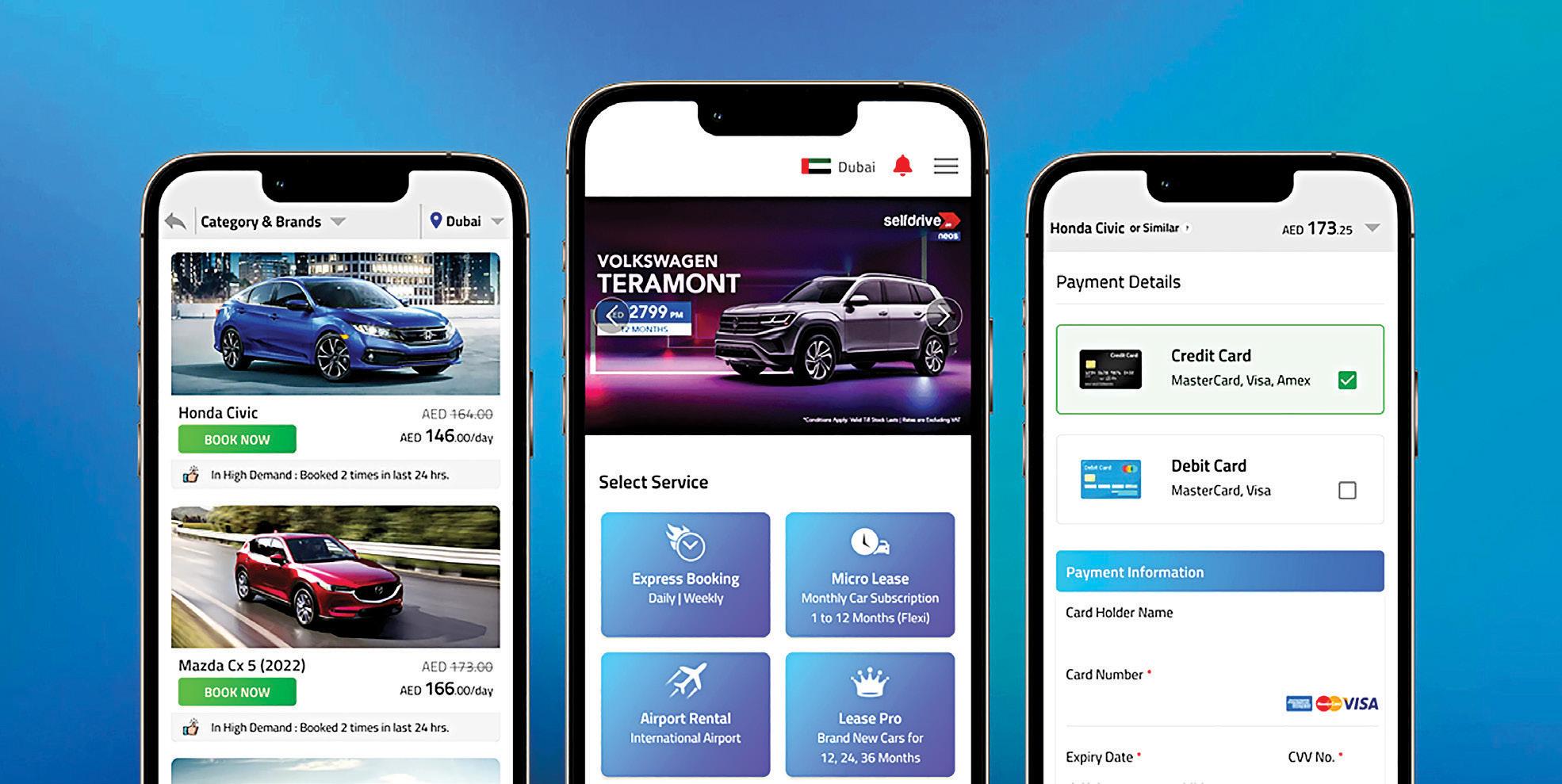
Soham Shah, founder and CEO, Selfdrive


requirements with a seamless experience. As such, under our programme, the customer needs to select a car for a one-year tenure and pay a monthly fee. A new car will get delivered as per the date and time requested. The predetermined monthly amount for subscribing to the vehicle under programme includes insurance, service and maintenance, replacement vehicle and roadside assistance at zero additional cost. With zero maintenance or no overhead cost and no 20 per cent down payment, our latest o ering aims to provide car ownership with zero liability.
“TYPICALLY RENTING CARS

ON MONTHLY BASIS CAN BE A BIT EXPENSIVE. ALSO, IN A MONTHLY SUBSCRIPTION MODEL, MOST CARS OFFERED ARE FROM THE READILY AVAILABLE FLEET OF CARS, POSING A BIT OF LIMITATION FOR THE SELECTION OF CAR MODELS AND TRIM LEVELS. HOWEVER, IN THIS PROGRAMME, CUSTOMERS CAN SAVE UP TO 15 TO 20 PER CENT AS THE MINIMAL COMMITMENT IS FOR A YEAR”
What are the cost benefits for users?
Typically renting cars on monthly basis can be a bit expensive. Also, in a monthly subscription model, most cars o ered are from the readily available fleet of cars, posing a bit of limitation for the selection of car models and trim levels.
However, in this programme, customers can save up to 15 to 20 per cent as the minimal commitment is for a year. Secondly, users get a new car which is exclusively registered for them plus the option to select the colour and trim level of their choice. In a monthly rental model, customers will have the option to only choose car models and brands that fit the monthly subscription bracket. Under the Neos programme customers have the option to also drive premium cars, while aligning with their budget.
WITH ZERO MAINTENANCE OR NO OVERHEAD COST AND NO 20 PER CENT DOWN PAYMENT, OUR LATEST OFFERING AIMS TO PROVIDE CAR OWNERSHIP WITH ZERO LIABILITY
Automotive apps will power innovation in the car rental sector, says Udrive CEO Nicholas Watson














How do you see the growth of on-demand mobility and contactless driving post-pandemic in the UAE?

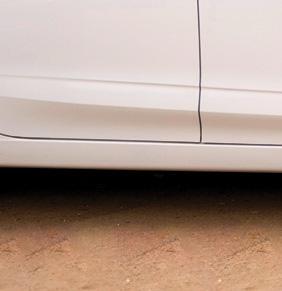



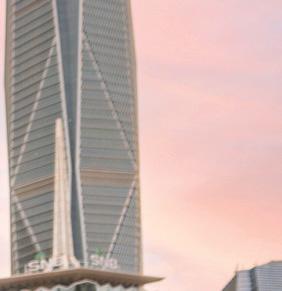
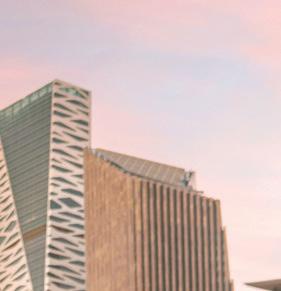
The Covid-19 created an entirely new way to think about work and life balance. More and more workplaces are engaging in hybrid work schemes combining o ce and home workspaces. This leads to those hybrid employees and individuals considering whether they need to purchase and own a car that might be parked idle in the garage for most of the week or go for a parttime usership of a car. Therefore, we have seen a big increase in registrations in areas that are not usually hotspots for Udrive.
While the lockdown hurt Udrive’s revenue initially, we concentrated on unit economics and a route to profitability
rather than just chasing revenue growth. We have tripled our fleet since and are geared for triple-digit percentage growth and accelerated profitability in the region over the next year.

Contactless has become the new standard for almost every industry. ‘Contactless’ isn’t just about removing the need for human interaction, which is a benefit when it comes to concerns about the virus, but it’s also important to streamline the customer journey. As you can imagine, when you build a product or service that does not rely on human interaction, you are e ectively building a faster and more economical way of achieving your end goal. In our case, it takes no more than 10 seconds to book a car near your location once you are registered to use the platform.
Nicholas Watson, CEO and co-founder, Udrive UAE


How are tech-enabled automotive apps changing the face of the industry?



Tech enablement streamlines the customer experience in ways that were historically always considered manual human processes. This changes the way







businesses or car rental companies operate and eventually makes the customer’s life easier.
This is forcing automotive manufacturers to think of cars as ‘shared’ rather than singularly owned and this impacts the design, look and feel of how those cars will operate. There will always be those who want the car entirely for themselves and those vehicles will become highly customisable down to the individual’s tastes, however, as sharing becomes a larger portion of automotive usage, we will see some radically di erent approaches to how those cars adopt technology to meet the demand of multiple users on a single car.

Automotive apps are a catalyst for change and, because they enable e ciency in renting, the likelihood is they will drive the innovation in car rental. A report by KPMG estimates that half of the car owners today will no longer want to own a vehicle by 2025, indicating an increase in the trend of on-demand transportation services.


However, the innovation really is in the business model and operational excellence of a car rental company. It does not matter how great the app is if the car is poor quality or is not in the right place at the right time for the customer. So, while the apps accelerate the future, the culture and adoption of business innovation is where I see the future of car rental.
Tell us about your company and your journey so far in this industry.
Udrive is the UAE’s first pay-per-minute car rental concept that started in 2017 o ering drivers in the UAE and recently Saudi Arabia, a cost-effective, shortterm driving solution. Drivers can book a car for their journey via our app, find it at a location that’s convenient to them, and then simply drive. With free petrol, insurance included in the price, most public parking fees covered and with no hidden charges, all the user needs to do is drive.
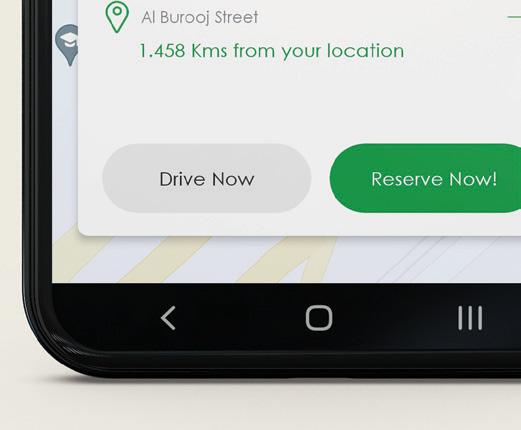

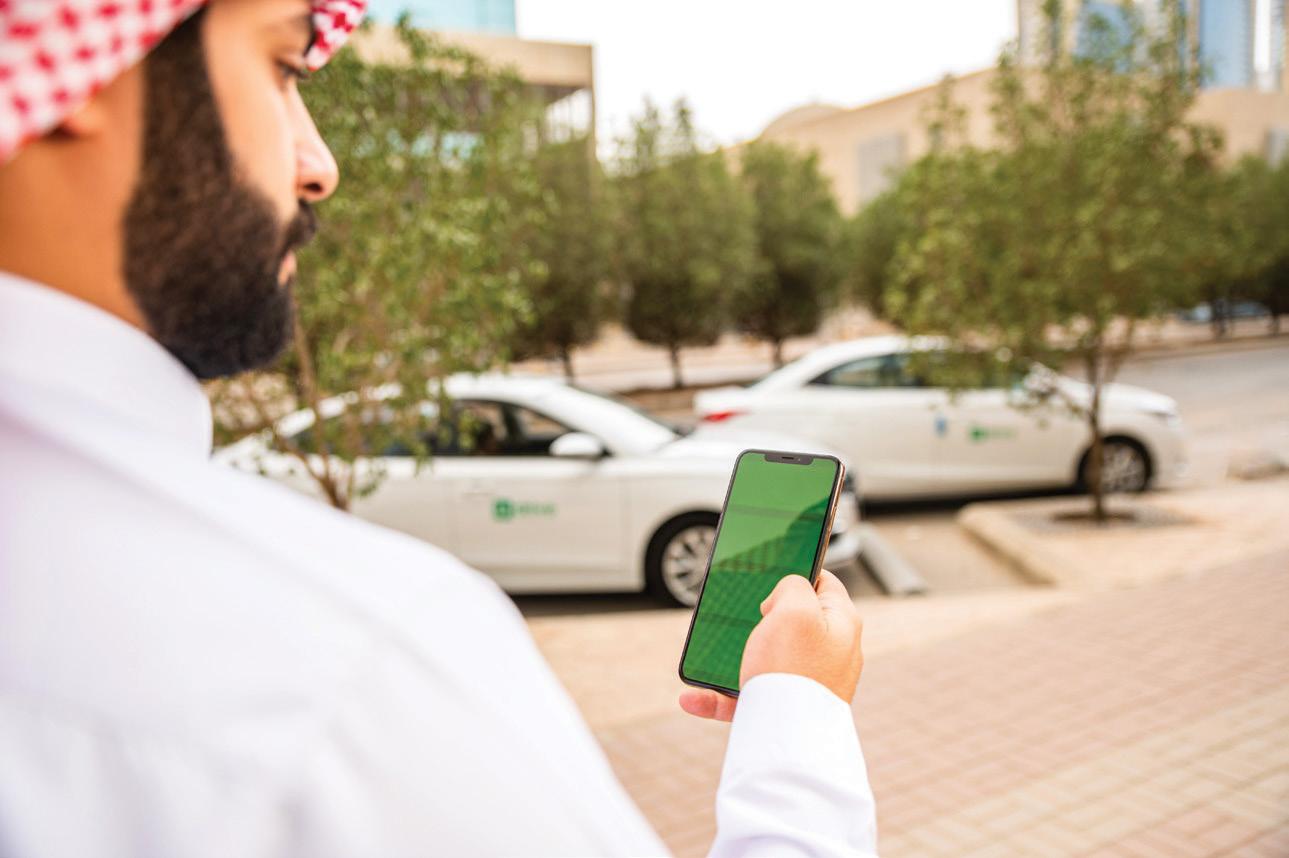
Since launching Udrive, we’ve had our fair share of startup experiences, both positive and negative while scaling at triple digits across revenue, users and fleet.
Both tourists and residents can drive the car even if it is only for a few minutes, rather than renting cars by the day. We are on our way to a 1,000car fleet this year in the UAE. There are 300,000 registered users and a total of over two million trips since our launch.
We have ambitious expansion plans over the next four years and a strong board, leadership team, strategy and funding to achieve them. The Udrive technology platform is presently applied to car sharing but is easily extendable to similar other use cases – we are currently in talks with strategic investors on how to apply our technology and operational experience in other markets. In 2023, we look forward to launching in more GCC cities.
“AS YOU CAN IMAGINE, WHEN YOU BUILD A PRODUCT OR SERVICE THAT DOES NOT RELY ON HUMAN INTERACTION, YOU ARE EFFECTIVELY BUILDING A FASTER AND MORE ECONOMICAL WAY OF ACHIEVING YOUR END GOAL. IN OUR CASE, IT TAKES NO MORE THAN 10 SECONDS TO BOOK A CAR NEAR YOUR LOCATION ONCE YOU ARE REGISTERED TO USE THE PLATFORM”
Digitalisation can either replace human input totally or just facilitate or help a human to do a job easily and efficiently, finds Ahmed Samy Mokhtar
is a commonly used word nowadays which simply means applying digital technologies to a process that used to be done manually or tra ditionally. For example, using a chatbot that auto-replies to people’s queries in a personal ised way and gives them instructions to help them and solve their problems; it is actually replacing customer service call centres. Dig italisation can either replace human input totally or just facilitate or help a human to do a job easily and efficiently.

According to the FDA, digital health is using computing platforms, connectivity, software and sensors for health care and related fields.
These technologies span a wide range of applications, from general wellness to med ical devices.
The broad scope of digital health includes categories such as:
Telehealth: This refers to remote clinical
services (telemedicine) as well as nonclinical services, such as HCP (healthcare professional) training, administrative meetings, and CME (continuing medical education).
Mobile health (mHealth): Medical and public health practices supported by mobile devices, such as mobile phones, patient monitoring devices, personal digi tal assistants and other wireless devices. It also includes wearable devices that can be incorporated into clothing or worn on the body as accessories such as smart rings and wristbands to track heart rate and activity for health and wellness purposes.
Online pharmacy: online ordering and delivery of pharmaceutical products ena bled by e-prescriptions.
Health information technology involves the processing, storage and exchange of health information in an electronic environment.
We can say that technology and digitali sation have penetrated all aspects of health care to support patients, caregivers, and normal people who are looking to improve their health and wellness.
The Middle East population is estimated to exceed 411 million people with an internet penetration of 67.2 per cent, which is rela tively high compared to the global average of 62.5 per cent. It is worth mentioning that UAE has one of the highest internet penetra tion rates in the world as it reaches 99 per cent and a smartphone penetration rate of 97.6 per cent.
In a recent report published by McKinsey & Company, it estimated the combined dig ital health market of Saudi Arabia and the UAE will reach $4bn by 2026. It also revealed elevated levels of interest and awareness in digital health technologies.
Based on its findings, they concluded that the UAE and Saudi Arabia could use digital health solutions to benefit patients and improve outcomes in areas including chronic-disease management, diagnostics and preventative care.
Awareness of established digital health solutions like e-pharmacy and telecon sultations is high.
User retention is high for existing digital health solutions.
Consumers primarily value the conveni ence and time savings provided by digi tal-health solutions.
Most non-users are interested in trying wellness applications and online pharmacies.
Benefits of digitalisation in healthcare
A better experience for patients and caregivers

Enhances data collection and storage
Saves time and effort
Improves communication
Provides higher efficiency
Minimises or eliminates mistakes
Decreases cost
If we look for an example of digital health implementation in the Middle East, UAE is surely a perfect one. The country has taken solid steps in telemedicine where you can get consultations from a virtual doctor, as well as international telemedicine services.
Online booking for doctor’s appoint ments is also available where you can
A RECENT REPORT
BY MCKINSEY & COMPANY, IT ESTIMATED THE COMBINED DIGITALHEALTH MARKET IN THE KINGDOM OF SAUDI ARABIA, AND THE UAE WILL REACH $4BN BY 2026
book, modify or cancel an appointment at any of the primary healthcare centres and hospitals of “The Ministry of Health and Prevention” through apps and portals.
An example of those portals is Shefaa which is a smart platform, running under the umbrella of the Ministry of Health and Prevention and controlled by Emir ates Health Services, where you can save your medical records, prescriptions, vac cines and allergies. Moreover, you can book appointments, request medical reports, track all your medical wearable statistics such as body mass index, total calories burnt, number of daily steps and walked distance, heart rate, blood pres sure and glucose level in blood.
Meanwhile, Qatar also has implemented digital health on a strategic level via QNeDP (Qatar National E-Health & Data Program) which had different components such as: Health Information Infrastructure that collects digital health resources, includ ing people, technologies and national ser vices, required to support the collection and sharing of health information. Electronic medical records that digitise health data at the care delivery points of services
Population Health Systems which moni tor population-level health matters such as non-contagious and contagious disease management, outbreak detection, and immunisation management.
We look forward to seeing more adop tion of digital health in the Middle East. A lot of opportunities are present for both gov ernmental and business sectors that would make the region a better place.
“THE UAE HAS TAKEN SOLID STEPS IN TELEMEDICINE WHERE YOU CAN GET CONSULTATIONS FROM A VIRTUAL DOCTOR, AS WELL AS INTERNATIONAL TELEMEDICINE SERVICES”
For the second year in a row, ASUS will be participating at Gitex Global to showcase its latest Expertbooks for business and education
a preferred technology brand in commercial PC and education.
The brand’s dedicated business division, ASUS Business, constantly strives to meet the needs of end-users from verticals such as small and medium-sized business, government, education and corporate sectors. The division provides a wide range of laptops (Expertbook), all-in-one PCs and desktops (ExpertCenter), monitors, servers, networking and storage solutions.
ASUS designs each product keeping in mind the requirements of specific user segments. To accommodate their lifestyle and grow with their business, the brand develops multiple products that include laptops, desktops, all-in-one PCs and Chromebooks for business, making it suitable for anyone seeking new technology, whether they are students, government workers, content creators or enterprises.
“We’ve supplied key education sectors with ASUS ExpertBook series across more than 45 schools in the Middle East and ExpertCenter desktops for local government organisations. Reliability and durability are precisely what convinced our partner’s Gems Education and Dubai Health Authority to choose ASUS Solutions over others,” comments Tolga Ozdil, commercial and regional head of META at ASUS.

ASUS, the global technology company providing intuitive devices, has embarked on a new journey toward becoming
ASUS’ supply has expanded to key education sectors with the brand’s ExpertBook series across more than 45 schools in the Middle East and ExpertCenter desktops for local government organisations. Both Dubai Health Authority and Gems Education have selected the brand as their solution supplier which denotes the durability and reliability of ASUS products.
Meanwhile, ASUS Business is participating at Gitex Global 2022 for the second consecutive year and invites channel partners and attendees to try out the latest devices firsthand at its stand.
The three commercial laptops that will be displayed among the Expertbooks, include – the ExpertBook B7, the ExpertBook B5 Flip, and the ASUS ExpertBook B3 Detachable, which
 Tolga Ozdil
Tolga Ozdil
provide unmatched performance and mobility and are intended for business users.

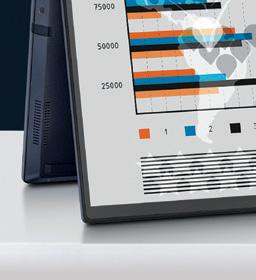


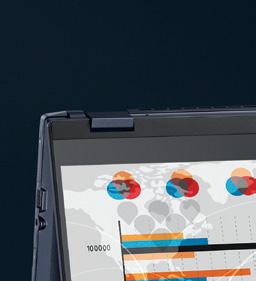
ASUS ExpertBook B7 Flip is an enterprise-level 5G-enabled premium laptop that makes working on the go more accessible than ever. It features a lightning-fast data connection and a secure network. In addition, users may enjoy an immersive working environment for all their business needs, thanks to the 360–degree flippable design, which removes any restrictions on how they do their job.
The ASUS ExpertBook B5 Flip is built for business success in style, with a precision-crafted chassis as light as 1.38 kg — and a 360° flippable touchscreen to empower the ultimate flexibility. It also features all-day battery life and is engineered with cutting-edge technologies to improve on-the-go work efficiency. Some of its key features include – an Intel Core processor, AI noise reduction, dual-SSD RAID support, and ASUS NumberPad.
The ASUS ExpertBook B5 Flip weighs just 1.38 kg. Additionally, it has an all-day battery life and is built with numerous cutting-edge technologies to increase productivity. It’s also packed with features


to protect users’ privacy and business data, including a built-in fingerprint sensor and TPM 2.0 chip.
The ASUS ExpertBook B3 Detachable is the ideal 2-in-1 portable companion for uninterrupted remote learning and working. Designed for education and built for business, the device may be used horizontally and vertically as a tablet or laptop. It features a detachable design, extensive dual-orientation stand cover, and a 16:10 multitouch screen. The laptop is equipped to do various tasks, like taking notes in class using the included pen and entering data into financial spreadsheets.
“The two-year period that we have known has undeniably transformed the workplace, and it’s up to business
owners, executives and other managers to forge the new future of work. They need tools that work reliably, seamlessly, and in a secure environment daily. ASUS is known for innovating highly reliable and durable devices for the consumer and gaming markets. Now, with the Expert-series portfolio and solutions, we are setting a new standard for the commercial PC market to enable businesses to define their new work style with elite performance, premium craftsmanship, durability and enterprisegrade tools,” concludes Ozdil.
Now, with the Expert-series portfolio and solutions, we are setting a new standard for the commercial PC market to enable businesses to define their new work style with elite performance, premium craftsmanship, durability and enterprise-grade tools”
Tolga Ozdil , commercial and regional head – META, ASUS
OPPO’s newly launched Reno8 Pro 5G, equipped with cutting-edge technology, promises smooth performance and an allround flagship experience. We got the smartphone for a hands-on review, and here’s what it looks like.
The Reno8 Pro 5G features a fresh new look – a streamlined unibody design with a glass back cover that eliminates the need for a standalone camera ‘bump’. As a result, the handset not only looks good but feels comfortable to hold as well. The Reno8 Pro 5G is the thinnest Reno series phone to date, measuring 7.34mm in thickness and weighing 183g.
The smartphone o ers a smoother viewing experience, thanks to its 6.7–inch ultra-clear AMOLED display, 93.4 per cent screen-to-body ratio, support for one billion colors, and 120Hz refresh rate. Additionally, the display is HDR10+ certified.
Designed to be a portrait expert, especially with night-shooting capabilities,

the Reno8 Pro 5G features a 50MP primary camera (Sony IMX766 sensor), 8MP wide-angle camera and 2MP macro camera. It has a 32MP front-facing camera (Sony IMX709).
The device is also equipped with the brand’s first self-developed imaging neural processing unit – MariSilicon X. Additionally, this is the first time 4K video recording has been available on a smartphone in this price range. Users can record crystal-clear portrait movies at night with 4K ultra night video, and portrait videos captured with strong backlight are enhanced with 4K ultraHDR video.

Powering the Reno8 Pro 5G is the MediaTek Dimensity 8100–Max. Built-on 5nm process, the octa-core SoC (processor) delivers powerful performance with lower power consumption. In addition,
the handset features a storage space of 12GB RAM and 256GB ROM.
To help users enjoy its all-round flagship-level performance, the Reno8 Pro 5G delivers a faster and more reliable experience. With a 4500mAh battery and 80W SuperVOOC, it can charge 50 per cent in 11 minutes, and a five-minute charge is enough to provide two hours of mobile gaming.
The battery life of the smartphone can be increased to 1,600 charge/ discharge cycles, or about four years of average use, with the help of the Battery Health Engine.
One of the impressive features in the Reno8 Pro 5G is its ultra-conductive cooling system. It has a series of advanced cooling materials and an expanded cooling area to improve the overall cooling performance of the phone. Among the new materials is ultra-conductive graphite, which has been put through a series of intensive processes to increase its thermal conductivity. So, whether the user is playing games or watching videos, the smartphone will continue to run smoothly without overheating.
The Reno8 5G is loaded with systemlevel gaming optimisations for mobile gamers. The Reno series is the first to enable PubG 90Hz refresh mode. To avoid making users wait while downloading, the background update feature enables game updates to be downloaded in the background. When the update is complete, a quick return button will hover on the screen, and the user can return immediately at that time.
The Reno8 Pro 5G is available in colours – glazed green and glazed black across OPPO’s regional websites and retail partner stores at a price of Dhs2,799.

THE BATTERY LIFE OF THE SMARTPHONE CAN BE INCREASED TO 1,600 CHARGE/DISCHARGE CYCLES, OR ABOUT FOUR YEARS OF AVERAGE USE, WITH THE HELP OF THE BATTERY HEALTH ENGINE








proprietary electronic chip loaded with an exclusive algorithm.
A Bose Fit Kit included with the QC Earbuds II supplies three sizes of eartips and three sizes of stability bands – allowing for up to nine customisation options for each bud. Advanced materials and manufacturing techniques keep the stability bands and eartips so t and compliant, yet durable and easy to change.

The QC Earbuds II are compatible with both Apple and Android devices. They feature improved voice pickup enabled by an updated noise removal algorithm and include Bluetooth 5.3 capability, have an IPX4 rating for sweat and water resistance, and work with a mobile device’s built-in voice assistant.
The buds o er up to six hours of battery life with three additional charges provided by the case. The case can fully charge the buds in one hour, while a quick 20-minute charge provides up to two hours of playback. The case itself fully recharges in three hours via USB-C.
The Bose QuietComfort Earbuds II are available in the UAE in triple black colour for Dhs1,199. A soapstone colour variant will also be available later this year.


The Bose QuietComfort (QC) Earbuds II are the company’s newest generation of wireless noise-cancelling earbuds. With Bose CustomTune sound calibration technology, QC Earbuds II intelligently personalise audio and noise cancellation performance to the unique shape of every ear.

The QC Earbuds II have an all-new design. Each bud is about one-third smaller than its predecessor, weighs just 6g, and they come in a pocketable charging case. And for further personalisation, they also include an eartip Fit Kit featuring a new two-piece system with interchangeable stability bands and eartips.


CustomTune sound calibration technology makes its debut in the QC Earbuds II. This innovation is triggered every time the buds are removed from their case and placed in the ears. A proprietary tone is played, and a microphone inside the earbud measures the ear canal’s acoustic response. That information is then used to precisely tailor both audio and noise cancellation performance.
The QC Earbuds II use four microphones in each bud – one on the inside and three on the outside – to sense, measure and send unwanted noise to a
THE CASE CAN FULLY CHARGE THE BUDS IN ONE HOUR, WHILE A QUICK 20-MINUTE CHARGE PROVIDES UP TO TWO HOURS OF PLAYBACK
8GB and additional functionality such as app grouping, app compression and data aggregation. The feature is ideal for users wanting to store large amounts of data, as the device’s memory is used at maximum efficiently with lower power consumption.
For hardcore gamers, the Y22s’ 18W fast-charge function is an ideal addition. With it, a 15-minute charge can allow for another 258 minutes of video or five rounds of games. Within 70 minutes, users can expect their phones to reach 70 per cent charge from zero.
The Y35, meanwhile, features a 44W flash charge. Within 15 minutes, the Y35 smartphone will attain sufficient power while in 34 minutes, the device will reach 70 per cent charge.
A 5000mAh battery capacity for both smartphones eliminates battery anxiety for users, with a single charge providing power for up to two days in stand-by mode, 21.5 hours of online HD movie streaming, or 9.4 hours of graph ics-intensive games for Y22s and 14.3 hours of online HD movie streaming, or 7.05 hours of graphics-intensive games for Y35.
ivo has launched two new smartphones among its Y series – the Y22s and Y35. The new arriv als feature include improved HD colour-rich screens for Y22s and FHD colour-rich screens for Y35 and superior photography. Both smartphones will also be powered by an octa-core Snapdragon 680 processor for all-round performance.
The water and dust-resistant smart phones feature a minimalistic body that rests comfortably in the user’s hand, with the body of the 5.55–inch Y22s and 6.58–inch Y35 maintaining a 2.5D curvature with rounded, symmet rical corners. Additionally, the frosted anti-glare surface across each device is resistant to scratches and fingerprints.
Other similar features available in both the Y22s and Y35 include ‘side finger print’ and ‘face wake’.
Users will also experience Funtouch OS 12 in both smartphones. The feature brings to the home screen the most fre quently used applications for elevated usability and time saving. Funtouch OS 12 also includes iManager, which optimises phone performance while managing key tasks such as scanning for risks and deleting the cache to free up valuable storage space.
Offering a 128GB of space for both Y22 and Y35, the smartphones feature a three-card slot design that allows for another memory card of up to 1TB to be added.
In addition to 8GB of RAM, the Y35 features an extended RAM 3.0 of up to
With a 50MP main camera and macro camera, the Y22s and Y35 delivers unique camera photography with a single touch. Meanwhile, the phone’s macro-camera provides crystal-clear focus as close as 4cm for ultra-detailed shots.
The Y22s includes a host of further smart camera features, from HD-clear selfies to a super night camera, multistyle portrait and a smart-face beauty video algorithm.
The Y35 also boasts a bokeh camera that delivers a sophisticated look, making portraits look more alive and with greater depth. Its bokeh flair portrait also enable users to click steady photos and videos as the features adjust to different point lights as needed.
The vivo Y22s is available with either a glittering Starlit Blue colour finish or Summer Cyan for Dhs779. The Y35, meanwhile, is available in an Agate Black or Dawn Gold Dhs899.



























































































































































































































































































